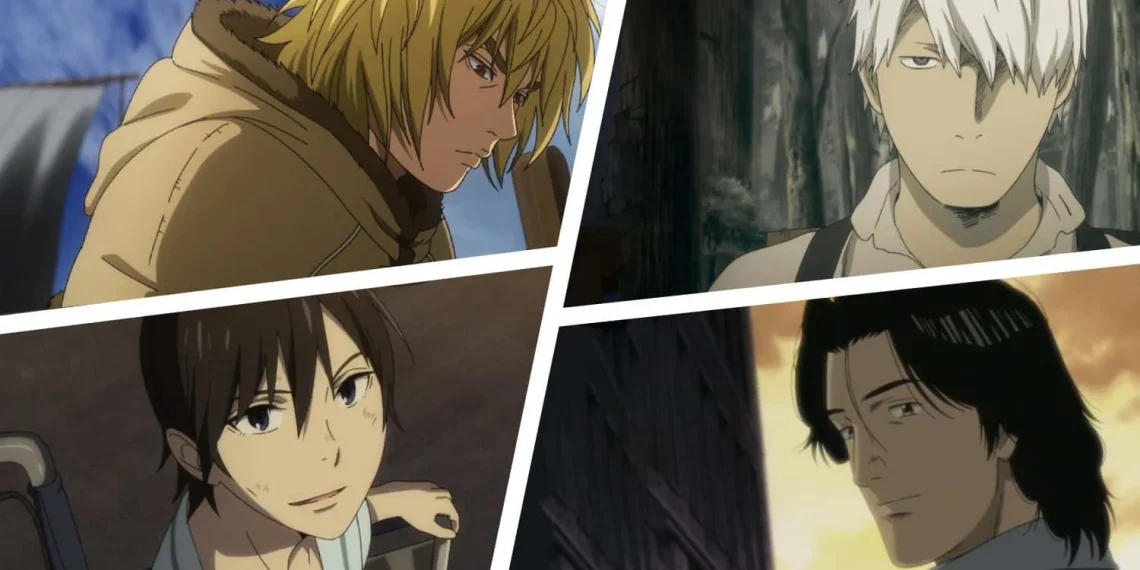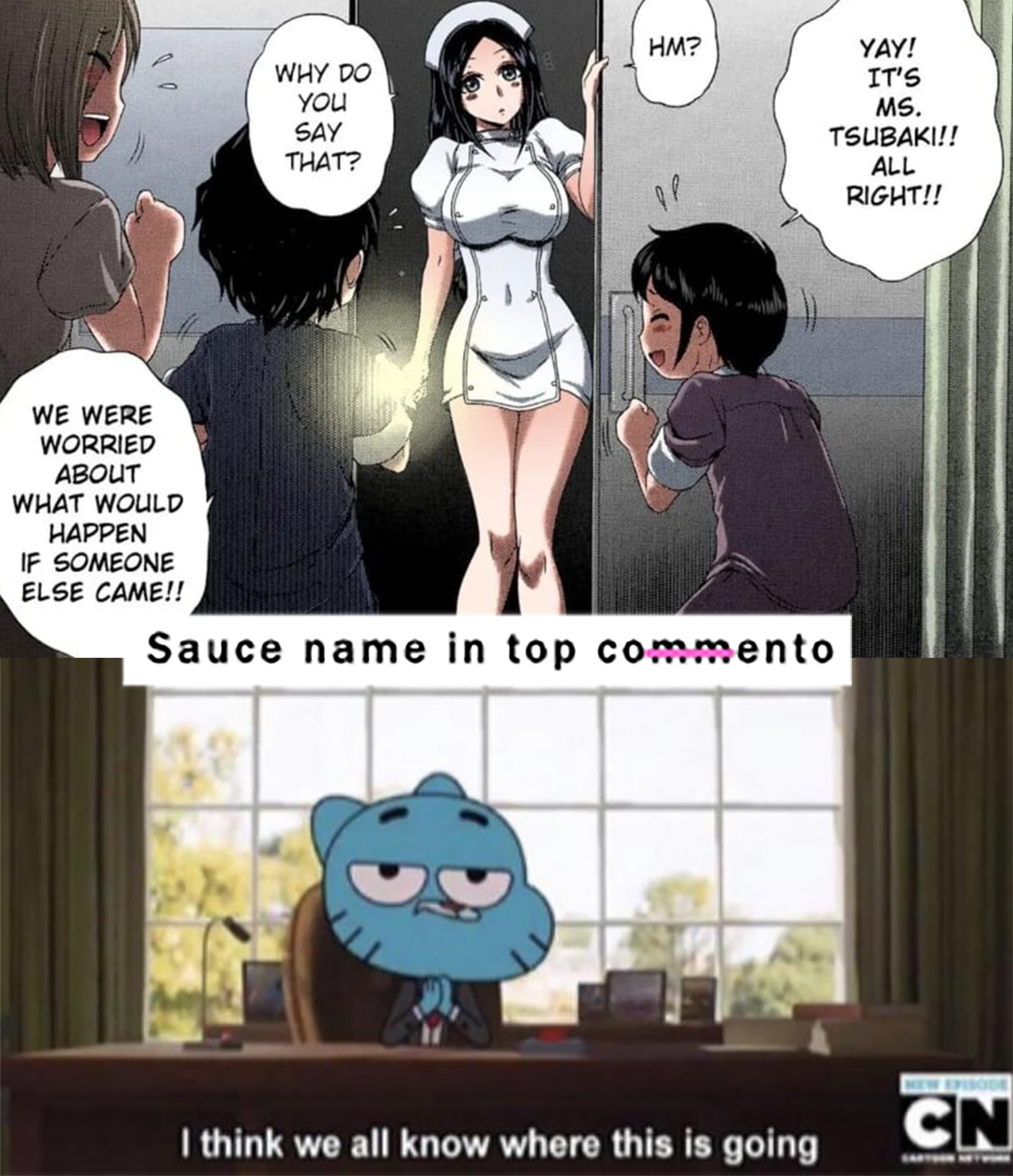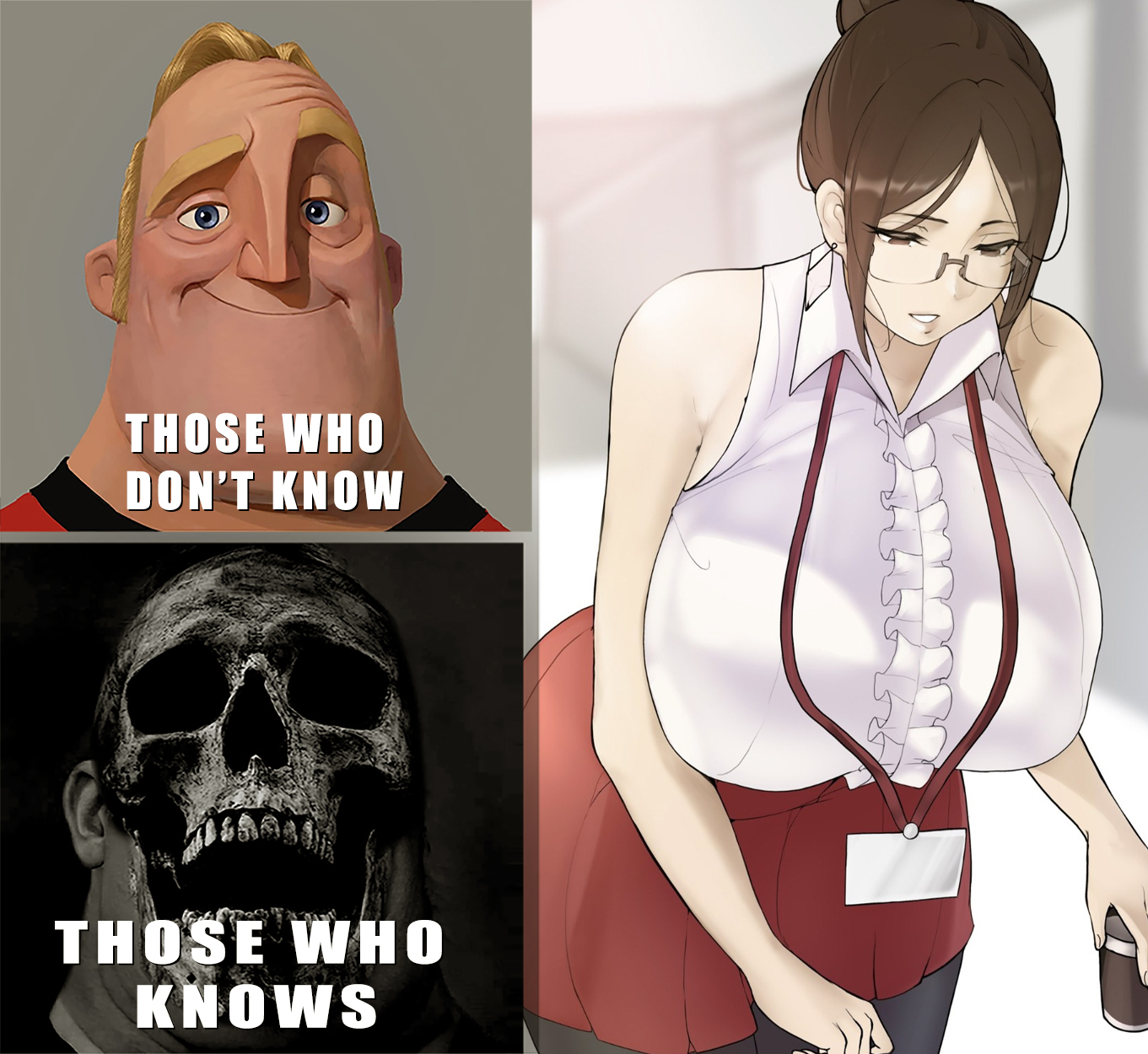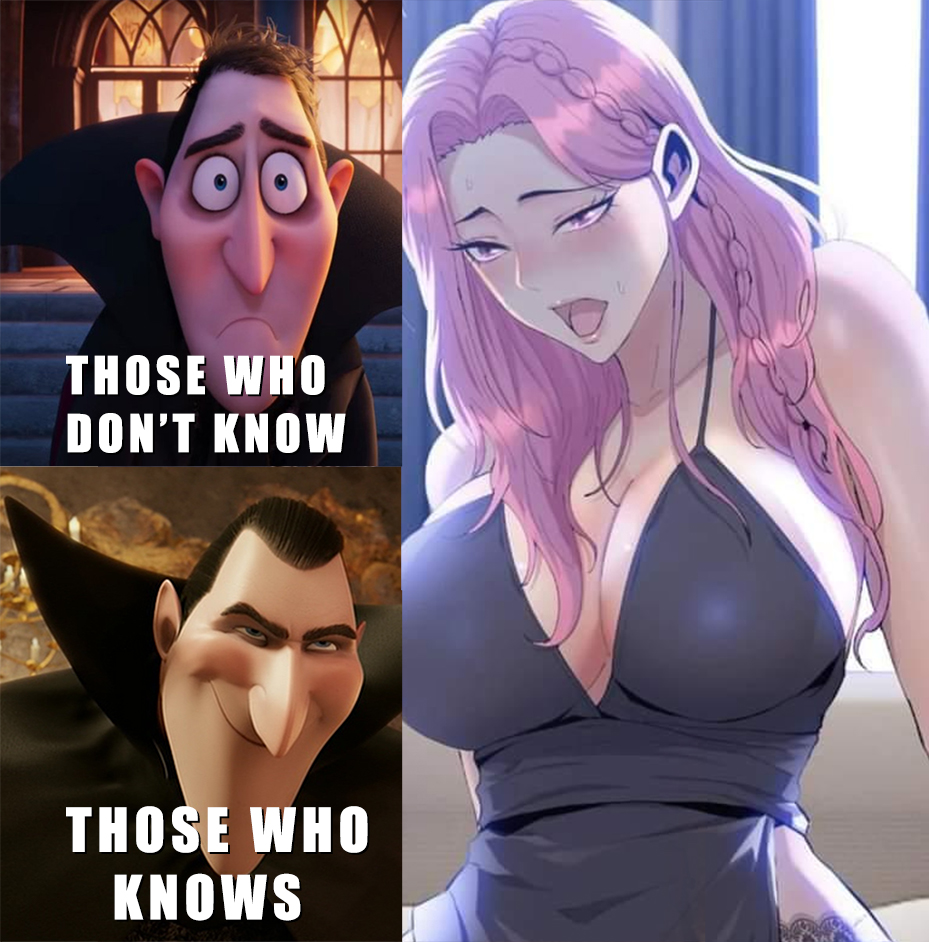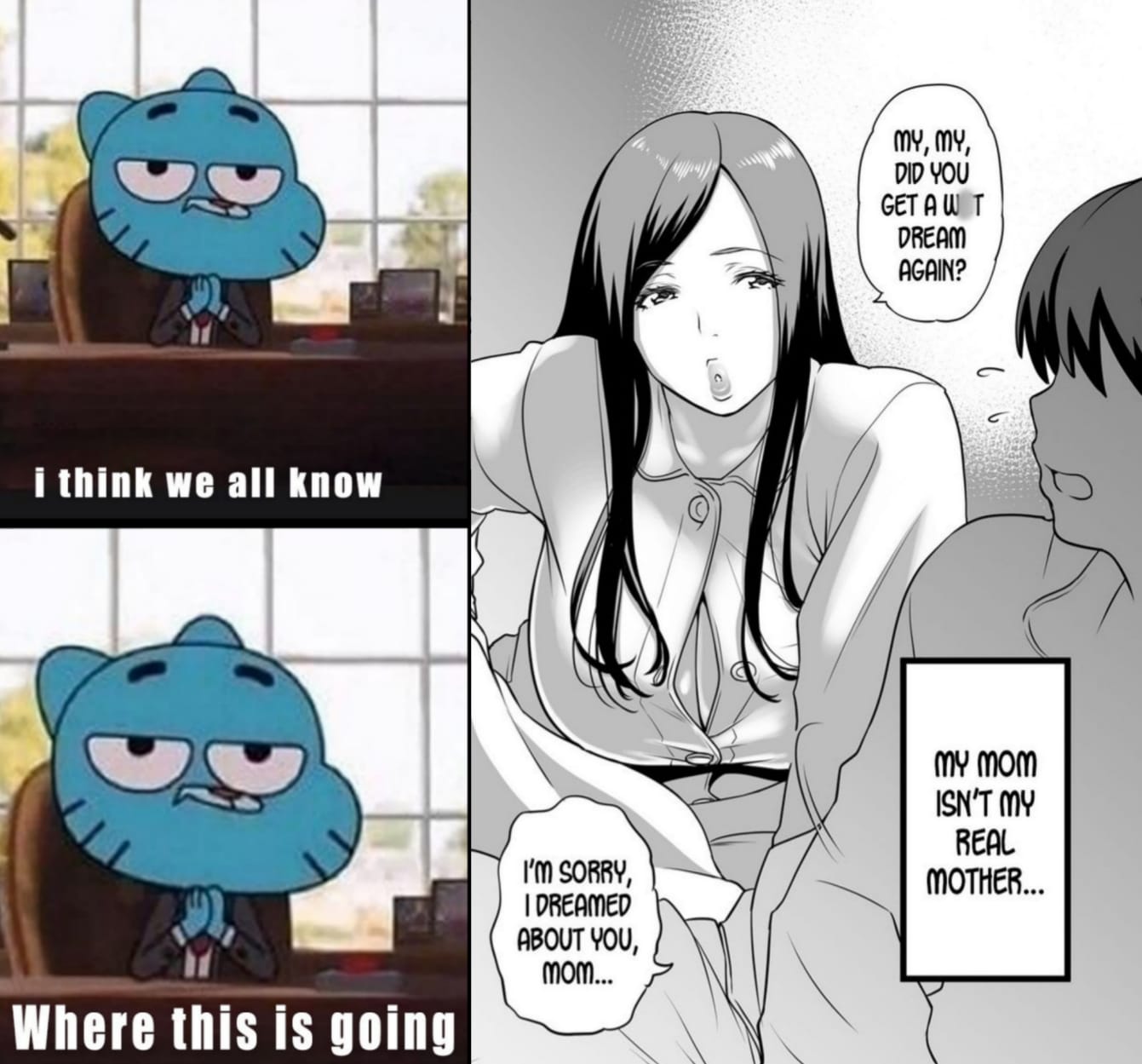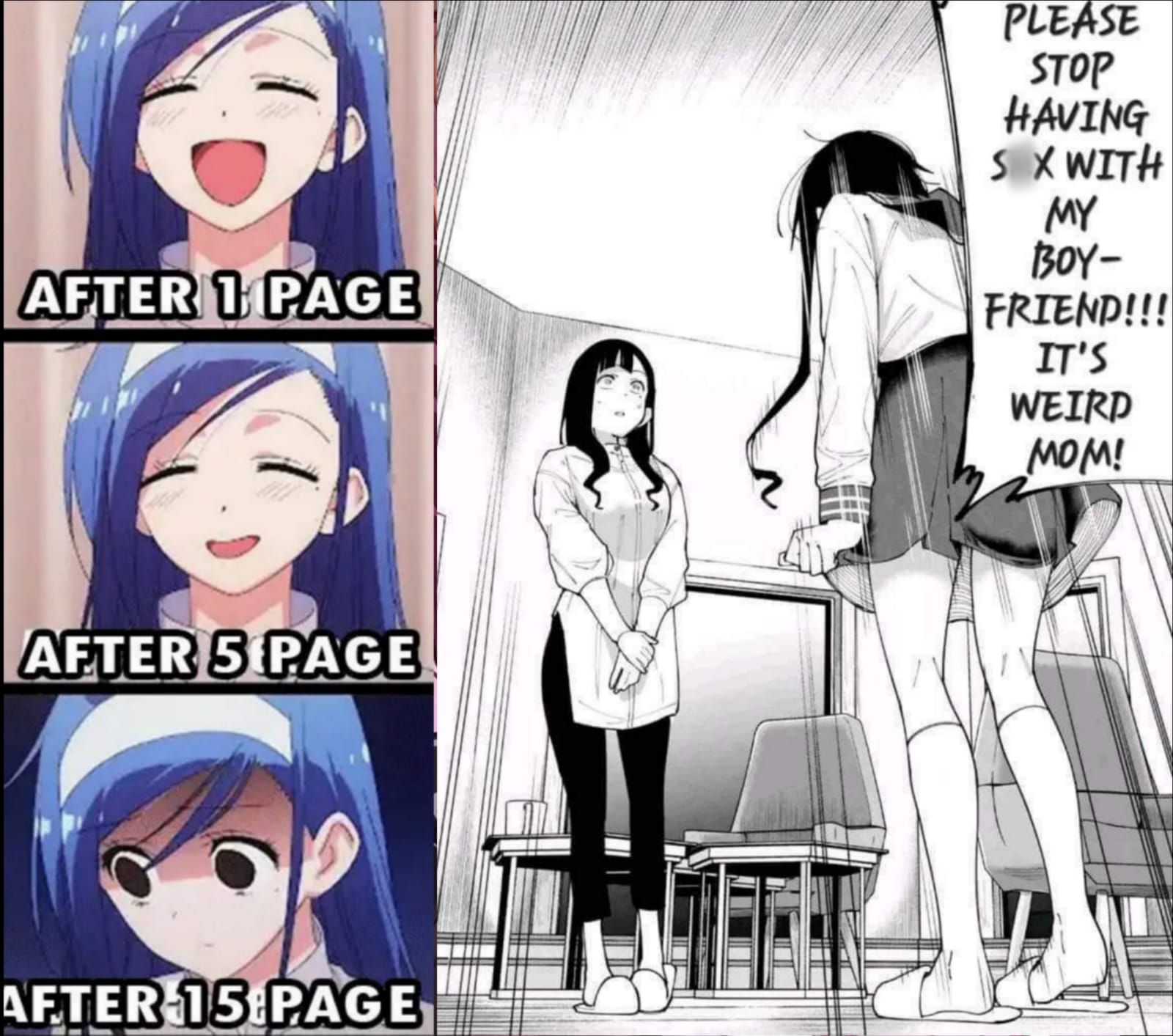Anime isn’t just for children; in fact, some of the best series fall into the seinen category, distinct from the teen-focused shonen genre. Seinen anime looks into more mature themes, catering to adult audiences.
While some of the themes explored in seinen anime may be uncomfortable for younger viewers, those seeking more mature storytelling will find that seinen series offers a diverse range of genres beyond action or thrillers. From romance to slice of life, isekai to comedy, seinen covers a broad spectrum of narratives that appeal to adult sensibilities.
Spring 2024 boasts a lineup of noteworthy seinen anime, offering fresh options for adult-oriented storytelling. As we hit the halfway mark of the season, Spring 2024 proves itself with a range of highly anticipated sequels, new adaptations, and original series.
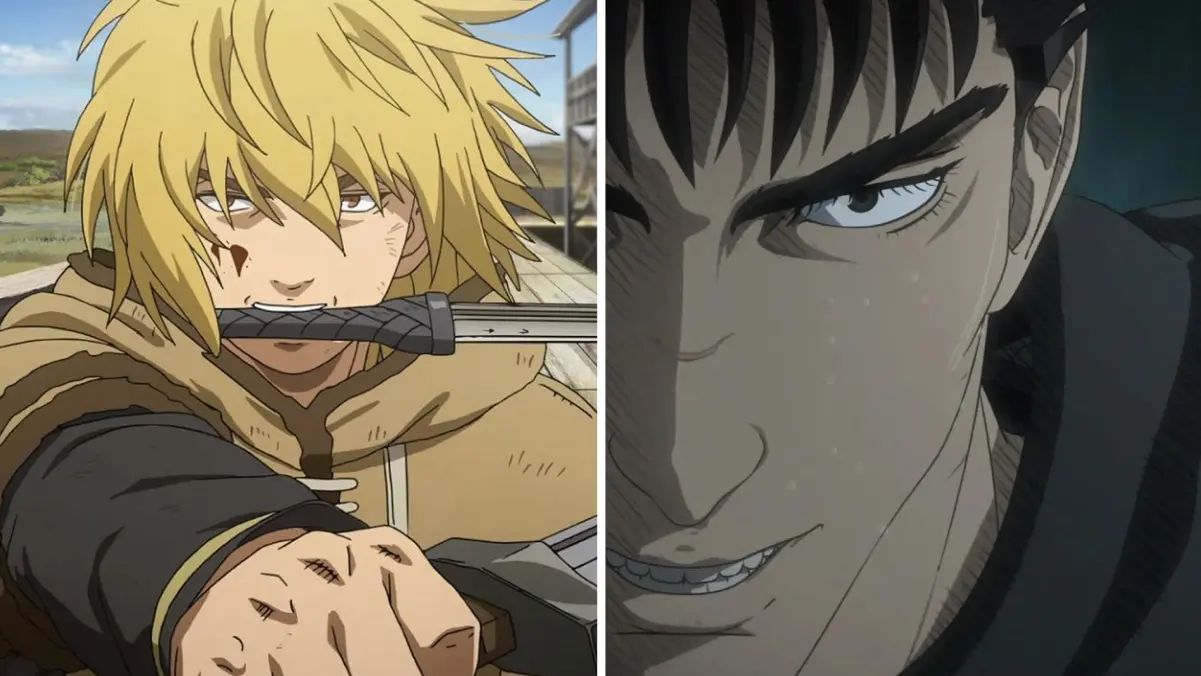
Shonen titles like Kaiju No. 8, Demon Slayer, Wind Breaker, and My Hero Academia continue to dominate the spotlight, while isekai maintains its strong presence with KonoSuba, That Time I Got Reincarnated as a Slime, and Mushoku Tensei: Jobless Reincarnation Season 2 Part 2, the latter being categorized as seinen due to its manga roots.
Though seinen shows aren’t as numerous, they’re certainly not lacking. Mushoku Tensei and Laid-Back Camp have established favorites, leaving room to explore new additions to the genre.
Re: Monster ventures into edgy isekai territory, going into uncomfortable themes while adhering to a familiar power fantasy structure. On the lighter side, Grandpa and Grandma Turn Young Again offer a charming take on aging and mortality, maintaining a delightful tone throughout.
11. Skip and Loafer

Misaki Takamatsu’s Skip and Loafer may seem like your typical small-town-girl-moves-to-the-big-city story, but it’s far from ordinary. Since its debut in 2018, the manga has steadily carved out its place as one of the standout ongoing seinen properties. Mitsumi, our protagonist, finds herself thrust into the bustling city of Tokyo, completely unprepared for its fast-paced lifestyle. Yet, she dives headfirst into the challenge, aided by her classmate Shima.
Skip and Loafer isn’t your run-of-the-mill slice-of-life tale; it’s a refreshing blend of comedy, introspection, and character development. While it maintains a relaxed pace, the story offers a grounded portrayal of high school life, capturing its drama and stresses. So far, P.A. Works has done an excellent job adapting the manga, bringing its charm to life on screen.
“Skip and Loafer” is a heartwarming manga series written and illustrated by Misaki Takamatsu. Serialized in Shogakukan’s “Monthly Shonen Sunday” magazine since 2018, the series has entertained readers with its endearing characters, charming artwork, and touching storytelling. Through its exploration of friendship, companionship, and the simple joys of life, “Skip and Loafer” offers a delightful and uplifting reading experience.
The story of “Skip and Loafer” revolves around the unlikely friendship between two main characters: Skip, a carefree stray dog, and Loafer, a shy and introverted high school student. Set in a quaint neighborhood, the series follows Skip and Loafer as they go on various adventures and navigate the challenges of life together.
The series kicks off with Loafer’s chance encounter with Skip, who he finds hiding in a cardboard box near his school. Despite his initial hesitation, Loafer decides to take Skip in and care for him, leading to the start of their heartwarming friendship. As Skip and Loafer spend more time together, they go on a series of adventures, from exploring their neighborhood to meeting new friends and overcoming obstacles along the way.
Throughout the series, Skip and Loafer encounter various characters and situations that test their friendship and teach them valuable lessons about life, love, and loyalty. From heartwarming moments of camaraderie to humorous mishaps and unexpected challenges, each adventure brings Skip and Loafer closer together and helps them grow as individuals.
As Skip and Loafer navigate the ups and downs of life, they experience personal growth and development. Loafer learns to overcome his shyness and insecurities, while Skip learns to trust and rely on humans despite his troubled past.
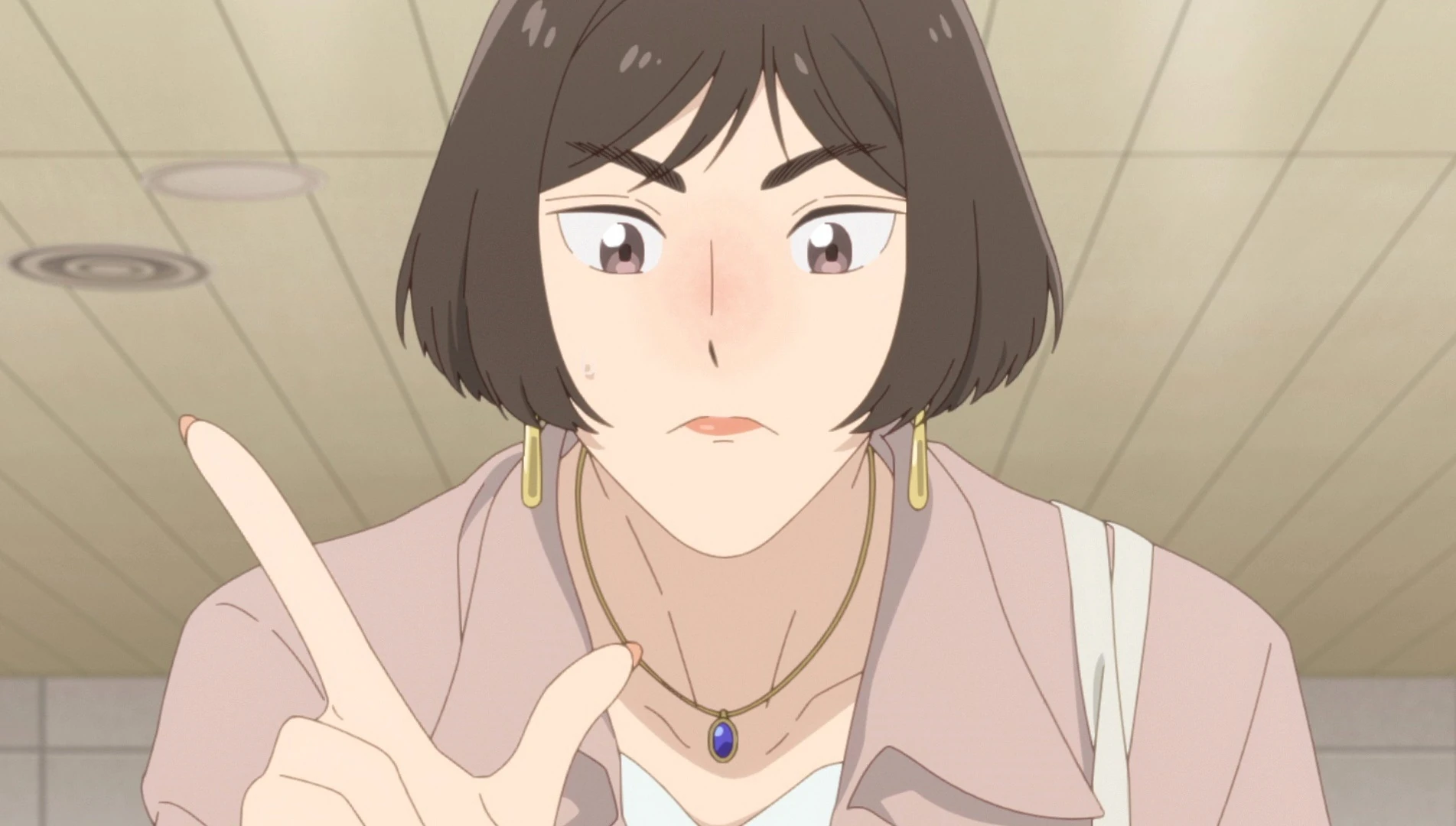
The series explores themes of self-discovery, acceptance, and the importance of empathy and understanding, offering readers a poignant and relatable portrayal of the human experience.
At its core, “Skip and Loafer” is a story about the power of friendship and the profound impact that companionship can have on our lives. Skip and Loafer’s friendship serves as a source of comfort, joy, and strength as they face life’s challenges together.
Through their adventures and experiences, Skip and Loafer demonstrate the transformative power of love, loyalty, and compassion, inspiring readers to cherish the connections they have with others.
“Skip and Loafer” celebrates the beauty and complexity of friendship, highlighting the deep bond that forms between Skip and Loafer as they navigate life’s journey together. The series emphasizes the importance of kindness, empathy, and understanding in building meaningful relationships.
With its charming artwork and relatable storytelling, “Skip and Loafer” offers readers a delightful slice-of-life experience filled with heartwarming moments, humorous anecdotes, and touching interactions. Misaki Takamatsu’s expressive artwork and character designs enhance the comedic and emotional impact of the story.
One of the strengths of “Skip and Loafer” lies in its well-developed characters and their journey of growth and self-discovery. From Loafer’s gradual transformation from a shy and reserved teenager to a more confident and compassionate individual to Skip’s evolution from a wary stray to a loyal and devoted friend, the series explores the complexities of human nature with depth and nuance.
Misaki Takamatsu’s artwork in “Skip and Loafer” is characterized by its adorable character designs, detailed backgrounds, and expressive facial expressions. The artwork effectively conveys the emotions and personalities of the characters, adding depth and authenticity to the story.
“Skip and Loafer” has received widespread praise from readers and critics alike for its heartwarming storytelling, relatable characters, and charming artwork. The series has garnered a dedicated fanbase and has been celebrated for its ability to evoke laughter, tears, and a sense of nostalgia.
“Skip and Loafer” is a delightful and uplifting manga series that offers a touching exploration of friendship, companionship, and the simple joys of life.
With its endearing characters, engaging storytelling, and heartwarming themes, it has captured the hearts of readers of all ages and continues to inspire and delight audiences around the world. Whether you’re a fan of slice-of-life manga or simply enjoy heartwarming stories about the power of friendship, “Skip and Loafer” is a series that is sure to leave a lasting impression.
10. Hellsing Ultimate
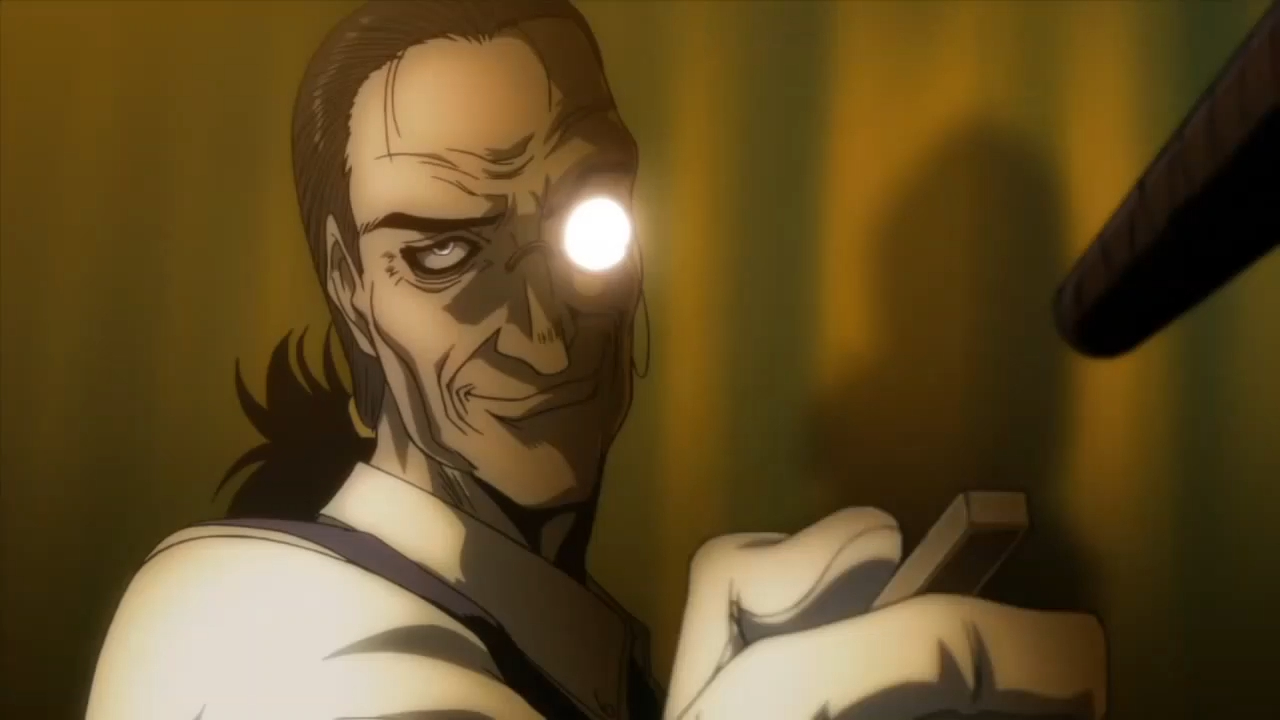
Vampires have carved out their own niche in the fantasy anime genre, with series like the apocalyptic Seraph of the End and the dramatic Strike the Blood making their mark. However, it all traces back to one particular seinen classic: Hellsing Ultimate.
The story plunges viewers into Alucard, a vampire and devoted servant of the Hellsing family, known for their prowess in hunting evil. While the series doesn’t shy away from common vampire tropes (in fact, it helped establish many of them), it offers one of the most visceral experiences in modern seinen anime. For fans of suspense craving a dose of intense violence akin to Berserk, Hellsing Ultimate delivers thrills aplenty.
“Hellsing Ultimate” is a compelling and dark anime series that goes into the realms of horror, action, and the supernatural. It’s a thrilling ride through a world where vampires, ghouls, and other supernatural creatures lurk in the shadows, and only a few stand against the tide of darkness.
Originally created by Kouta Hirano as a manga series, “Hellsing Ultimate” was adapted into an OVA (Original Video Animation) series directed by Tomokazu Tokoro and produced by Satelight and Geneon. The OVA consists of ten episodes, each approximately 50 minutes long, which were released sporadically between 2006 and 2012.
The story revolves around the Hellsing Organization, a clandestine group within the British government dedicated to combating supernatural threats, particularly vampires. At its helm is Sir Integra Hellsing, a formidable leader who inherited the organization from her late father. Assisting her in this mission is the enigmatic and powerful vampire Alucard, one of the most formidable creatures of the night.
The series kicks off with the Hellsing Organization facing off against a rising threat: a Nazi organization known as Millennium, led by the malevolent Major. This group seeks to plunge the world into chaos using an army of artificial vampires and various other supernatural entities.
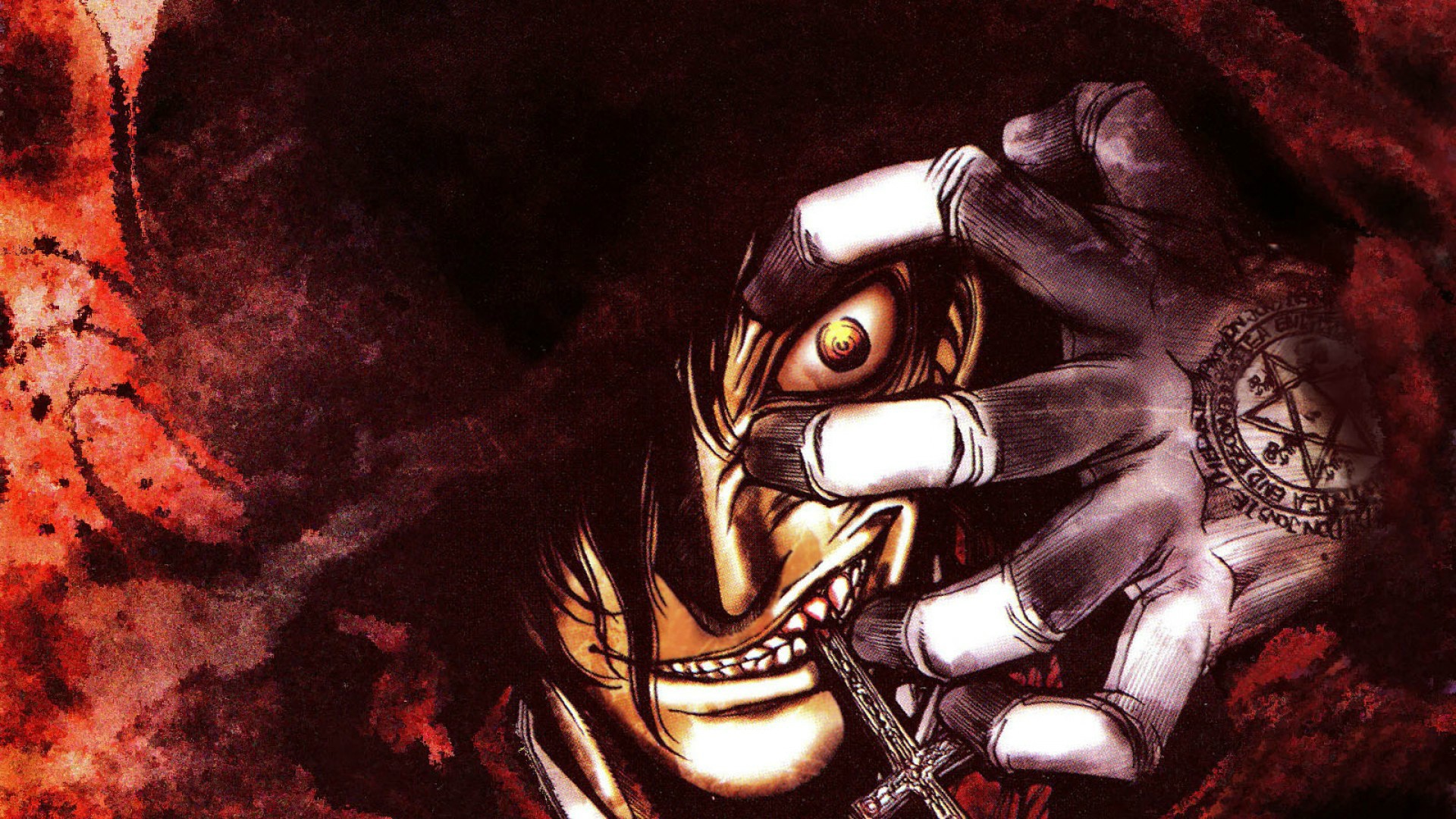
As the conflict escalates, the Hellsing Organization finds itself embroiled in a desperate battle for survival, not only against the forces of Millennium but also against internal treachery and betrayal.
One of the standout elements of “Hellsing Ultimate” is its exceptional animation quality. Produced by Madhouse Studios, the animation is fluid and detailed, with beautifully choreographed action sequences that are both thrilling and gruesome. The art style perfectly complements the dark and gritty tone of the series, creating an atmosphere of dread and tension that pervades every episode.
In addition to its stunning visuals, “Hellsing Ultimate” boasts a nice storyline filled with complex characters and intricate plot twists. Alucard, in particular, is a fascinating character, with a rich backstory and a morally ambiguous nature that adds depth to the narrative.
His dynamic with Integra, as well as his interactions with other characters such as Seras Victoria, a former police officer turned vampire, and Walter C. Dornez, a veteran vampire hunter, is among the highlights of the series.
Beyond its engaging characters and plot, “Hellsing Ultimate” also explores deeper themes such as the nature of good and evil, the consequences of power, and the fragility of humanity in the face of overwhelming darkness. It raises thought-provoking questions about morality, redemption, and the lengths to which individuals will go to achieve their goals.
Hellsing Ultimate” is a must-watch for fans of dark fantasy and supernatural horror. With its stunning animation, compelling characters, and gripping storyline, it stands as one of the definitive anime series of its genre. Whether you’re drawn to its thrilling action sequences or intrigued by its exploration of deeper themes, “Hellsing Ultimate” is sure to leave a lasting impression.
9. Erased

Erased looks into the intriguing premise of altering past events, placing protagonist Satoru Fujinuma at the center of a mystery surrounding the deaths of his mother and childhood friends. With a unique twist, Satoru possesses the ability to leap eighteen years into the past, tasked with preventing these tragic incidents while inhabiting his younger self.
The anime fascinates with its gripping mystery, offering a blend of fast-paced sequences and striking visuals. Its appeal extends to a wide audience within the seinen demographic, ensuring that most fans will find something to enjoy in Erased.
“Erased,” also known as “Boku dake ga Inai Machi” (僕だけがいない街), is a Japanese manga series written and illustrated by Kei Sanbe. Serialized in Kadokawa Shoten’s “Young Ace” magazine from 2012 to 2016, it has since been adapted into an anime television series, a live-action film, and a Netflix live-action series.
“Erased” is celebrated for its gripping storytelling, compelling characters, and masterful blend of mystery, suspense, and supernatural elements.
“Erased” follows the story of Satoru Fujinuma, a struggling manga artist who possesses an unusual ability called “Revival.” This power allows him to go back in time moments before a life-threatening event occurs, giving him the opportunity to prevent it from happening. However, when tragedy strikes close to home, Satoru finds himself sent back 18 years into the past to his childhood in Hokkaido.
After being sent back in time to his childhood, Satoru realizes that he has been given the chance to prevent a series of kidnappings and murders that occurred in his hometown when he was a child. The victims include his classmate, Kayo Hinazuki, and other children from his school.
Determined to change the course of history, Satoru sets out to uncover the truth behind the crimes and identify the perpetrator, known as the “Candy Man.”
As Satoru reconnects with his childhood friends and becomes involved in their lives, he discovers that the events of the past are more interconnected than he initially realized. Through his actions and interventions, he not only seeks to save the lives of the victims but also to heal the emotional wounds of his younger self and those around him.
The series explores themes of friendship, redemption, and the impact of trauma on individuals and communities, offering a poignant and thought-provoking exploration of human nature.

As Satoru goes deeper into the mystery surrounding the kidnappings and murders, he uncovers shocking revelations and hidden truths that challenge his perceptions of reality. Along the way, he must confront his own fears and insecurities, as well as the dark secrets that have haunted him since childhood.
The series builds tension and suspense as Satoru races against time to reveal the mystery and prevent history from repeating itself. With each revelation, the stakes become higher, and the true identity of the “Candy Man” is finally revealed in a climactic and emotionally charged confrontation.
“Erased” explores the concept of time travel as a means of redemption and second chances. Through Satoru’s journey, the series examines the impact of small actions and choices on the course of history, as well as the potential for individuals to change the trajectory of their lives and the lives of others.
At its core, “Erased” is a gripping mystery thriller that keeps viewers on the edge of their seats with its twists, turns, and cliffhangers. The series masterfully builds suspense and tension, gradually revealing clues and revealing the truth behind the crimes as Satoru races against time to uncover the identity of the perpetrator.
One of the strengths of “Erased” lies in its well-developed characters and their emotional journeys. Satoru undergoes significant growth and transformation as he confronts his past traumas and learns to embrace his role as a protector and hero. The supporting cast, including Satoru’s childhood friends and family members, also experience growth and development as they grapple with their own struggles and insecurities.
Kei Sanbe’s artwork in the “Erased” manga is characterized by its detailed character designs, atmospheric settings, and evocative use of light and shadow. The artwork effectively conveys the mood and tone of the story, enhancing the emotional impact of key moments and dramatic sequences.
The anime adaptation, produced by A-1 Pictures, features fluid animation, striking visuals, and a haunting musical score that immerses viewers in the series. The direction and pacing are skillfully executed, capturing the intensity and urgency of Satoru’s race against time.
“Erased” has been widely acclaimed by critics and audiences for its compelling storytelling, memorable characters, and atmospheric presentation. The manga received several awards, including the prestigious Manga Taisho Award in 2014, and the anime adaptation was praised for its faithfulness to the source material and its ability to grab viewers with its suspenseful narrative and emotional depth.
“Erased” is a nice and emotionally resonant series that stands as a masterpiece of the mystery thriller genre. With its compelling story, well-developed characters, and atmospheric presentation, it offers a gripping and thought-provoking exploration of time travel, redemption, and the power of human connection.
Whether you’re a fan of mystery thrillers, supernatural dramas, or character-driven narratives, “Erased” is a must-watch series that will keep you on the edge of your seat
8. Land of the Lustrous
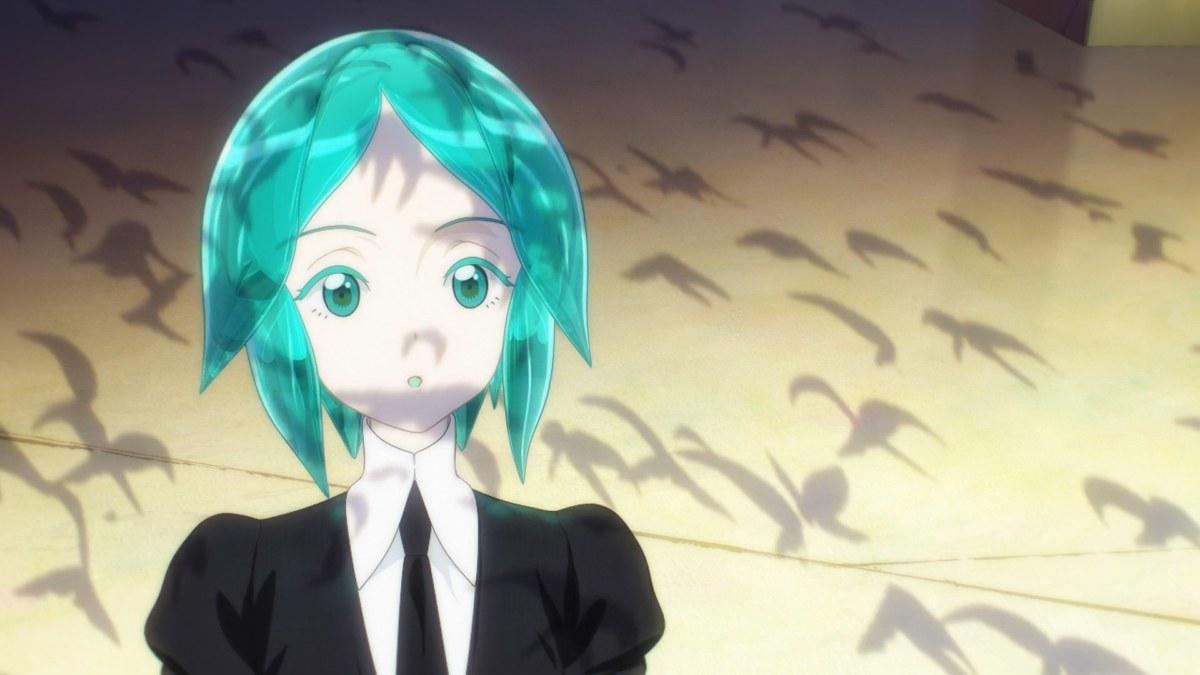
Anthropomorphism is a recurring trope in anime, with warships, animals, and even countries transformed into human-like characters. Yet, a lesser-known series looks into the concept of anthropomorphic gems. Land of the Lustrous follows the journey of Phos in an intricate world where Earth is rendered inhospitable for humans, and the enigmatic Lunarians pose a constant threat.
Few Seinen anime series can match the uniqueness of Land of the Lustrous. The premise of living gemstones sets it apart, creating a world that’s both fascinating and distinct. From its metallic art style that diverges from the norm to the characters’ unique properties and the unconventional factions at play, Land of the Lustrous keeps viewers on their toes, offering an unpredictable and thoroughly entertaining experience.
“Land of the Lustrous” (宝石の国, “Hōseki no Kuni”) is a unique and visually stunning anime series based on the manga of the same name written and illustrated by Haruko Ichikawa. Aired in 2017, the anime adaptation quickly garnered attention for its breathtaking animation, mesmerizing soundtrack, and thought-provoking storytelling.
Set in a fantastical world where sentient gemstone beings inhabit a desolate surface, “Land of the Lustrous” offers a nice blend of action, mystery, and existential exploration.
In the distant future, the Earth has been ravaged by cataclysmic events, leaving behind a barren wasteland inhabited by gemstone beings known as the “Lustrous.” These gemstone beings, each representing a different type of mineral, are tasked with defending their land from enigmatic creatures known as the Lunarians, who seek to harvest them for their valuable gemstones.
The series primarily follows the journey of Phosphophyllite, a young and fragile gemstone who is assigned the seemingly mundane task of compiling an encyclopedia by their mentor, Kongo-sensei. However, Phos is eager to prove themselves and dreams of joining the fight against the Lunarians.
As Phos becomes increasingly frustrated with their perceived uselessness, they go on a quest for self-discovery and purpose, leading them to uncover the secrets of their world and the true nature of the conflict between the Lustrous and the Lunarians.
Throughout the series, Phos encounters various mysteries and enigmas surrounding the Lunarians, including their origins, motivations, and abilities. As Phos goes deeper into these mysteries, they are forced to confront uncomfortable truths about themselves and their world.
The series explores existential themes such as identity, purpose, and the nature of existence, challenging both the characters and the audience to question their understanding of reality and their place within it.
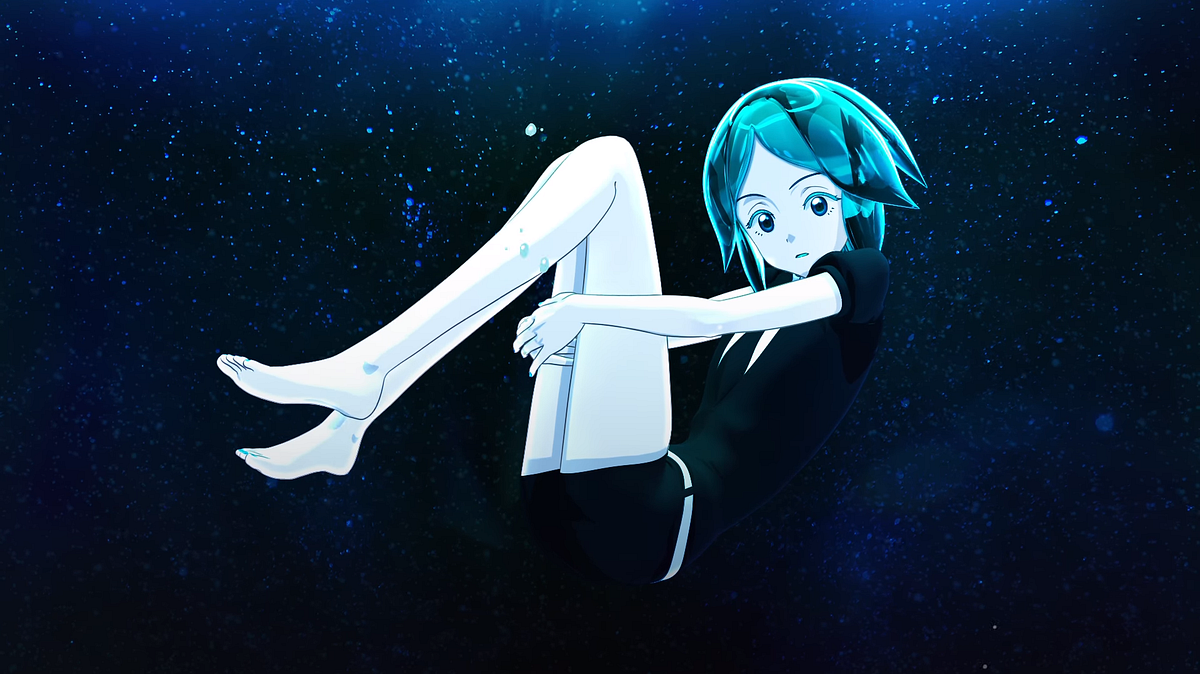
As Phos interacts with other members of the Lustrous, including the stoic and mysterious Antarcticite, the gentle and nurturing Cinnabar, and the wise and enigmatic Kongo-sensei, they undergo significant growth and development.
The series examines the complexities of interpersonal relationships and the bonds that form between individuals in times of adversity. Phos’s journey is not only one of self-discovery but also of empathy, compassion, and understanding.
“Land of the Lustrous” goes deep into existential themes, exploring questions of identity, purpose, and the nature of existence. Through Phos’s journey of self-discovery, the series challenges viewers to reflect on their own lives and the choices that define them.
The series celebrates the beauty of the natural world and the fleeting nature of existence. The Lustrous, with their crystalline forms and ethereal beauty, serve as metaphors for the impermanence of life and the passage of time.
“Land of the Lustrous” explores themes of sacrifice and redemption, as characters grapple with the consequences of their actions and the choices they make in pursuit of their goals. Phos’s quest for meaning is fraught with challenges and sacrifices but ultimately leads to a deeper understanding of themselves and their place in the world.
The animation in “Land of the Lustrous” is nothing short of breathtaking, with its fluid movements, vibrant colors, and stunning visual effects. Studio Orange’s use of CGI animation gives the series a unique and otherworldly aesthetic, perfectly complementing the fantastical nature of the story.
The character designs are elegant and distinctive, with each gemstone being represented by a different type of mineral, such as diamond, jade, or amethyst. The arts are equally stunning, with their rocky outcrops, shimmering waterfalls, and ominous cloud formations adding to the sense of wonder and mystery.
“Land of the Lustrous” has received widespread acclaim from both critics and audiences for its innovative animation, thought-provoking storytelling, and richly developed characters. The series has been praised for its philosophical depth, emotional resonance, and stunning visual presentation, cementing its status as a modern masterpiece of anime.
“Land of the Lustrous” is a mesmerizing and thought-provoking anime series that pushes the boundaries of storytelling and animation. With its nice blend of fantasy, mystery, and existential exploration, it offers a deeply immersive and rewarding viewing experience that will linger in the minds of viewers long after the credits roll.
Whether you’re a fan of anime or simply appreciate artistry and storytelling at its finest, “Land of the Lustrous” is a must-watch series that deserves a place in the pantheon of anime classics.
7. Space Brothers
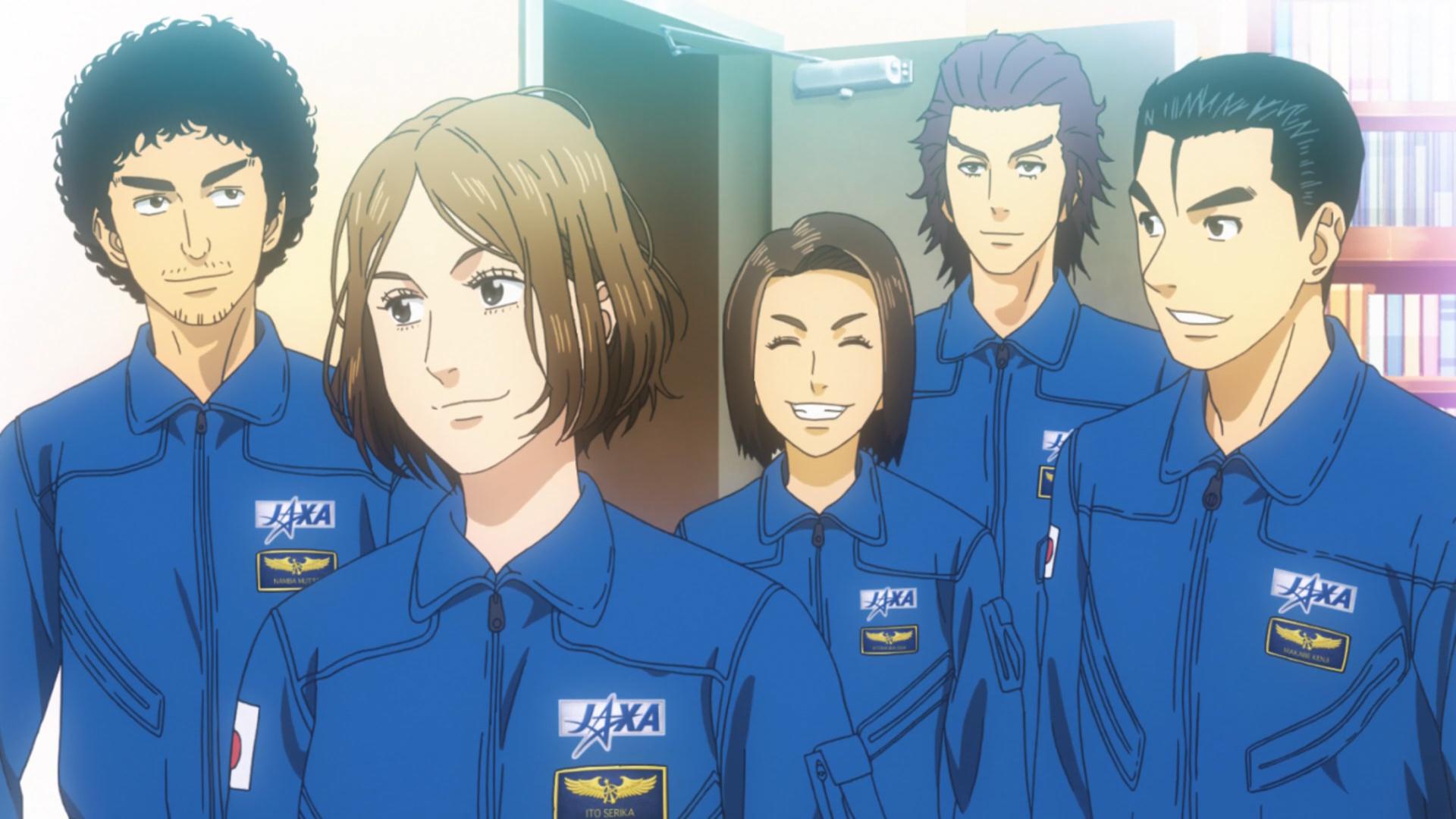
Space Brothers follows the journey of brothers Mutta and Hibito, who shared a childhood dream of venturing into space. While Hibito is on the brink of achieving this dream as an adult, Mutta finds himself struggling and directionless after being let go from his sales job. Facing a pivotal moment in his life, Mutta resolves to pursue his long-held ambition.
Although categorized as sci-fi, Space Brothers remains firmly grounded in reality. The anime meticulously chronicles Mutta’s quest to become an astronaut, depicting the challenges and setbacks inherent in such a pursuit. Through Mutta’s journey, viewers are immersed in the gritty realities of aspiring for the stars.
“Space Brothers,” also known as “Uchū Kyōdai” (宇宙兄弟) in Japanese, is a critically acclaimed manga series written and illustrated by Chūya Koyama. Serialized in Kodansha’s “Morning” magazine from 2007 to 2019, the series has also been adapted into an anime television series, a live-action film, and a novel.
“Space Brothers” has garnered widespread praise for its realistic portrayal of space exploration, its heartfelt characters, and its inspiring themes of perseverance, friendship, and the pursuit of dreams.
“Space Brothers” follows the journey of two brothers, Mutta and Hibito Nanba, who share a childhood dream of becoming astronauts and traveling to the moon. However, while Hibito achieves his dream and becomes an astronaut, Mutta finds himself stuck in a rut, working a mundane job and struggling to find his place in life.
The series begins with Mutta, the older brother, facing a series of setbacks in his life and career. After losing his job and experiencing a midlife crisis, he decides to pursue his childhood dream of becoming an astronaut.
As Mutta goes on the rigorous training program to become an astronaut, he faces numerous challenges and obstacles, both physical and emotional. Along the way, he forms close friendships with his fellow trainees and learns valuable lessons about teamwork, determination, and the importance of never giving up on his dreams.
While Mutta undergoes training on Earth, Hibito is already living his dream as an astronaut, participating in missions to the moon and beyond. However, he faces his own challenges and dangers in space, including life-threatening accidents and encounters with hostile forces.

The series explores Hibito’s experiences as an astronaut, as well as his deep bond with his brother Mutta. Despite the distance between them, the brothers support and inspire each other to overcome their fears and achieve their goals.
As Mutta and Hibito pursue their dreams of space exploration, they encounter a diverse cast of characters, including fellow astronauts, scientists, and engineers. Each character brings their own unique perspective and expertise to the story, enriching the narrative and deepening the themes of teamwork and collaboration.
The series highlights the challenges and triumphs of space exploration, from the thrill of launching into space to the awe-inspiring beauty of the cosmos. Through their experiences, Mutta and Hibito inspire others to reach for the stars and pursue their own dreams, no matter how impossible they may seem.
“Space Brothers” explores the power of dreams and aspirations in shaping the course of one’s life. Through the characters of Mutta and Hibito, the series emphasizes the importance of having a goal to strive for and the determination to overcome obstacles in pursuit of that goal.
The series celebrates the qualities of perseverance and resilience, as characters face setbacks and failures on their journey to achieving their dreams. Mutta’s unwavering determination and Hibito’s indomitable spirit serve as inspiring examples of the human capacity to overcome adversity and achieve greatness.
At its core, “Space Brothers” is a story about the bonds of family and friendship. The relationship between Mutta and Hibito is the heart of the series, as they support and encourage each other through life’s challenges and triumphs. The series also explores the friendships and camaraderie that develop among the astronauts and trainees, highlighting the importance of teamwork and solidarity in the pursuit of shared goals.
Chūya Koyama’s artwork in “Space Brothers” is detailed and expressive, capturing the vastness of space and the beauty of the cosmos. The character designs are distinct and memorable, with each character having their own unique appearance and personality traits.
The anime adaptation, produced by A-1 Pictures, features fluid animation, stunning visuals, and a moving musical score that enhances the emotional impact of the story. The direction and pacing are skillfully executed, drawing viewers into the series and immersing them in the wonder and excitement of space exploration.
“Space Brothers” has received widespread acclaim from both critics and audiences for its realistic portrayal of space exploration, its compelling characters, and its inspiring themes. The manga has won several awards, including the Kodansha Manga Award for Best General Manga in 2011, and the anime adaptation has been praised for its faithfulness to the source material and its emotional resonance.
“Space Brothers” is a nice and inspiring series that celebrates the human spirit and the pursuit of dreams. With its compelling story, richly developed characters, and stunning visuals, it offers a moving and thought-provoking exploration of the wonders of space and the resilience of the human spirit.
Whether you’re a fan of science fiction, and drama, or simply enjoy stories about the triumph of the human spirit, “Space Brothers” is a must-watch series that will leave a lasting impression.
6. Berserk
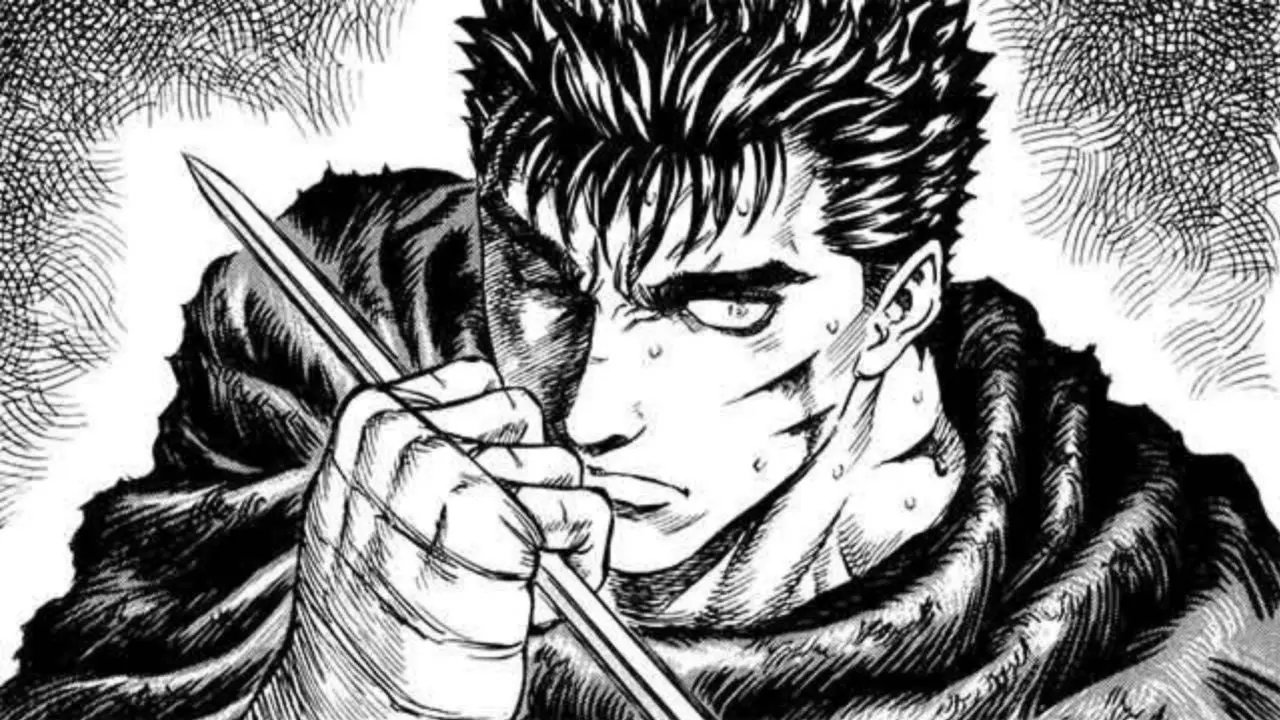
Berserk, penned by Kentaro Miura, isn’t your typical family-friendly anime choice, particularly with its bloody, gritty storyline featuring a formidable, sword-wielding protagonist. Guts, along with his equally ruthless band of mercenaries, navigates a world teeming with violence and danger.
While Berserk may not be suitable for everyone due to its intense content, for those willing to look into its dark narrative, it offers a thrilling and impactful experience. The absence of cheap plot armor adds depth to the story, making every perilous encounter feel significant and real. In essence, Berserk is a gripping rollercoaster of emotions, tailor-made for viewers who relish the adrenaline-fueled battles often found in shonen anime.
“Berserk” is a monumental work of dark fantasy that has left an indelible mark on the manga industry. With its intricate storytelling, complex characters, and breathtaking artwork, Kentaro Miura’s magnum opus stands as one of the most influential and revered series in the medium’s history. In this extensive review, we’ll go deep into “Berserk,” exploring its themes, characters, and impact on manga and beyond.
At the heart of “Berserk” lies a tale of darkness and despair, set against a backdrop of war, betrayal, and supernatural horror. The story follows the journey of Guts, a lone mercenary with a tragic past and a fearsome reputation as the “Black Swordsman.” Haunted by demons from his past and driven by a relentless thirst for vengeance, Guts goes on a quest to hunt down the demonic entities known as the Apostles and their enigmatic leader, Griffith.
The narrative of “Berserk” unfolds across several major arcs, with the “Golden Age Arc” serving as the foundation upon which the series is built. In this arc, we witness Guts’ early life as a mercenary in the Band of the Hawk, a renowned group of mercenaries led by the charismatic and ambitious Griffith.

As Guts rises through the ranks and forms close bonds with his comrades, including the fierce Casca and the loyal Judeau, he becomes entangled in Griffith’s grand ambitions and the dark forces that seek to destroy them.
The pivotal moment in “Berserk” occurs during the “Eclipse,” a cataclysmic event that marks a turning point in the series. Betrayed by Griffith and sacrificed to the demonic God Hand, Guts and his comrades are thrust into the “Abyss,” a realm of darkness and despair where they confront the true nature of their existence.
The Eclipse is a harrowing and nightmarish sequence that leaves an indelible mark on the characters and sets the stage for Guts’ relentless pursuit of vengeance against Griffith.
Following the Eclipse, Guts becomes the “Black Swordsman,” a lone warrior driven by rage and grief on a quest for revenge against Griffith and the God Hand.
As he travels across the war-torn surface, he encounters a diverse cast of characters, including the enigmatic witch Schierke, the fierce warrior Isidro, and the mysterious Skull Knight, who offer him guidance and support on his journey. Along the way, Guts battles demons, confronts his inner demons and grapples with the consequences of his actions as he struggles to reclaim his humanity in a world consumed by darkness.
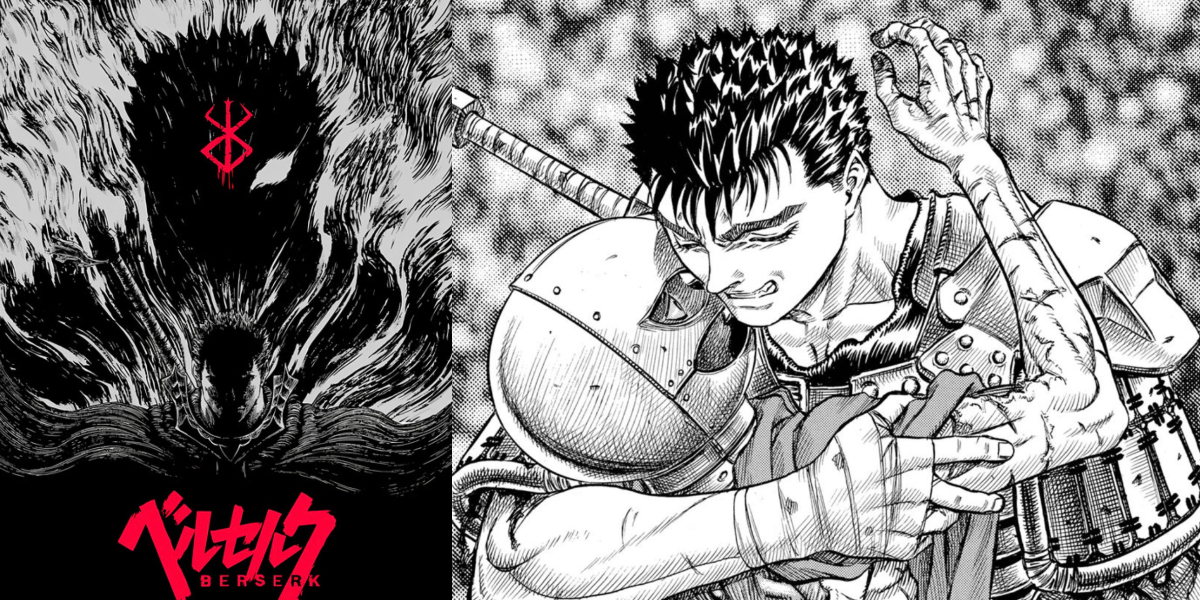
At its core, “Berserk” is a story about the human condition and the eternal struggle between light and darkness. The series explores themes of fate, free will, and the nature of evil, drawing readers into a brutal and unforgiving world where no one is safe from the horrors that lurk in the shadows.
Through its rich symbolism and allegory, “Berserk” invites readers to confront the darkness within themselves and to question the nature of morality and redemption in a world torn apart by violence and despair.
One of the defining aspects of “Berserk” is its richly developed cast of characters, each with their own hopes, fears, and motivations. From the tormented Guts to the enigmatic Griffith and the tragic Casca, the series features a diverse array of characters whose struggles and conflicts drive the narrative forward.
As the story unfolds, we witness their growth and evolution, as they grapple with their inner demons and confront the harsh realities of their world.
Kentaro Miura’s artwork in “Berserk” is legendary, known for its intricate detail, dynamic action scenes, and evocative imagery. From the sprawling battlefields to the towering citadels and grotesque monsters, Miura’s artwork brings “Berserk” to life in vivid and unforgettable detail.
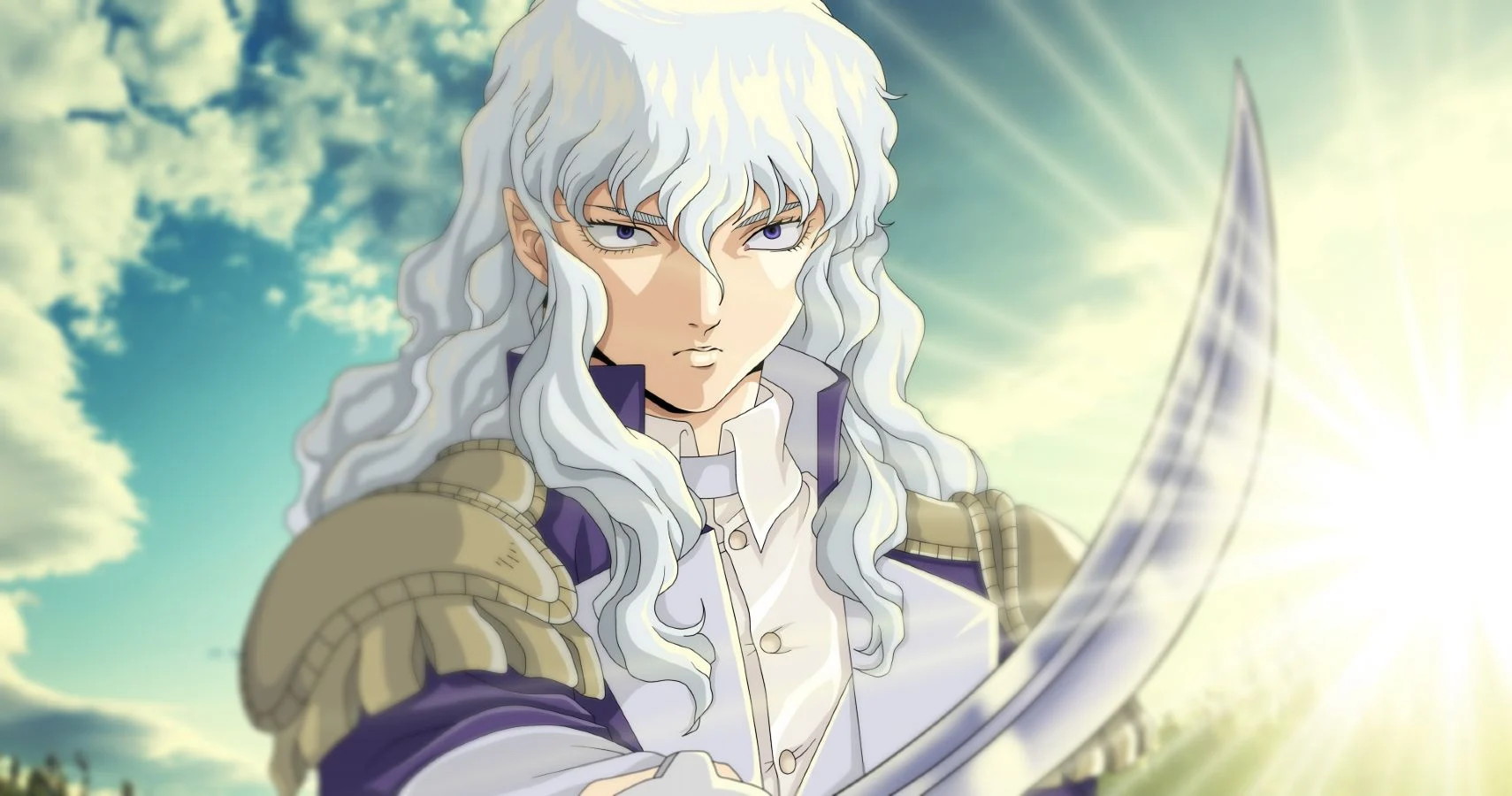
His masterful use of light and shadow, coupled with his keen eye for composition, creates a sense of atmosphere and depth that draws readers into the story and immerses them in its dark and foreboding world.
“Berserk” has had a profound impact on manga and beyond, inspiring countless creators and influencing a wide range of media, including anime, video games, and literature. Its themes of darkness and despair, coupled with its visceral and uncompromising storytelling, have resonated with audiences around the world, earning it a devoted fanbase and cementing its status as a modern classic.
Berserk stands as a towering achievement in manga, a dark and epic tale that explores the depths of the human soul and the eternal struggle between light and darkness.
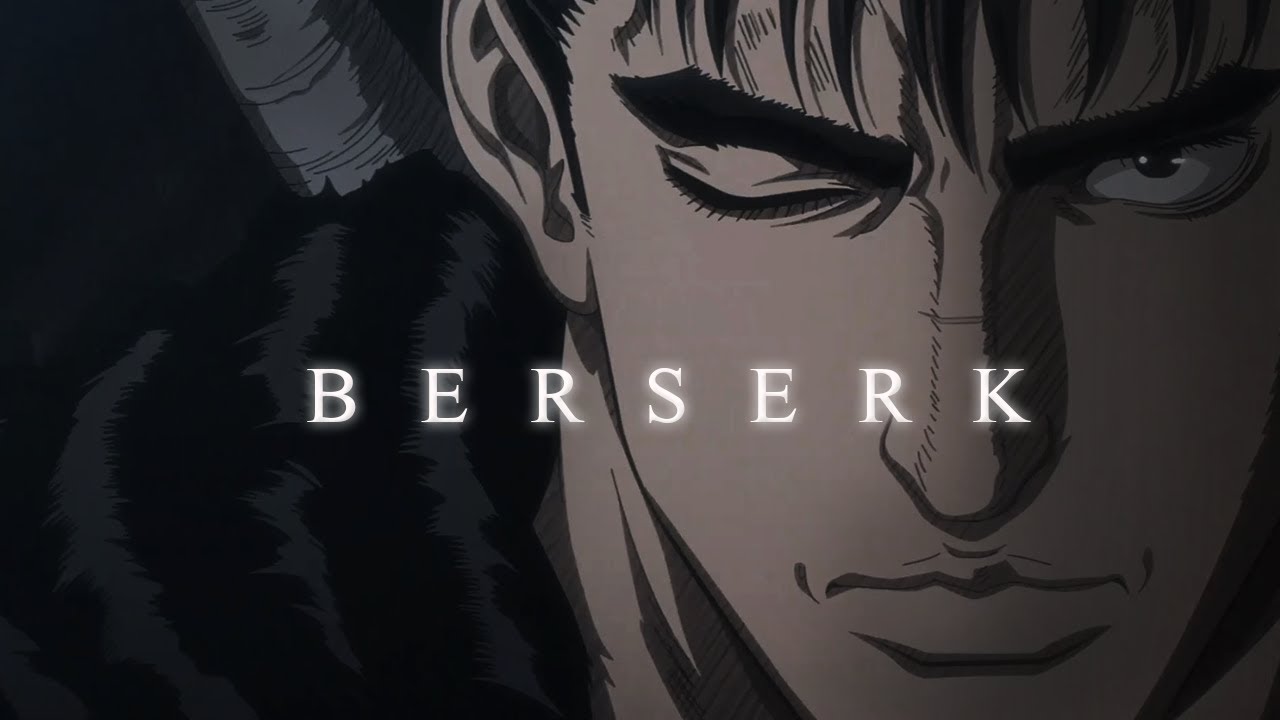
With its richly developed characters, intricate world-building, and breathtaking artwork, it offers a nice and unforgettable journey into the heart of darkness. Whether you’re a fan of dark fantasy or simply appreciate masterful storytelling and artwork, “Berserk” is a must-read series that will leave a lasting impression on anyone who dares to venture into its world.
“Berserk” is a visceral journey through a dark and brutal world, following the life of Guts, a lone warrior seeking vengeance against demons and destiny itself. Set in a medieval-inspired, this anime delves deep into themes of ambition, fate, and the consequences of wielding power.
With stunning animation that captures both the beauty and horror of its universe, “Berserk” delivers intense action sequences alongside moments of profound character development. However, its unflinching portrayal of violence and mature themes may not be suitable for all audiences. “Berserk” stands as a gripping saga that leaves a lasting impact on viewers.
5. Mushi-Shi
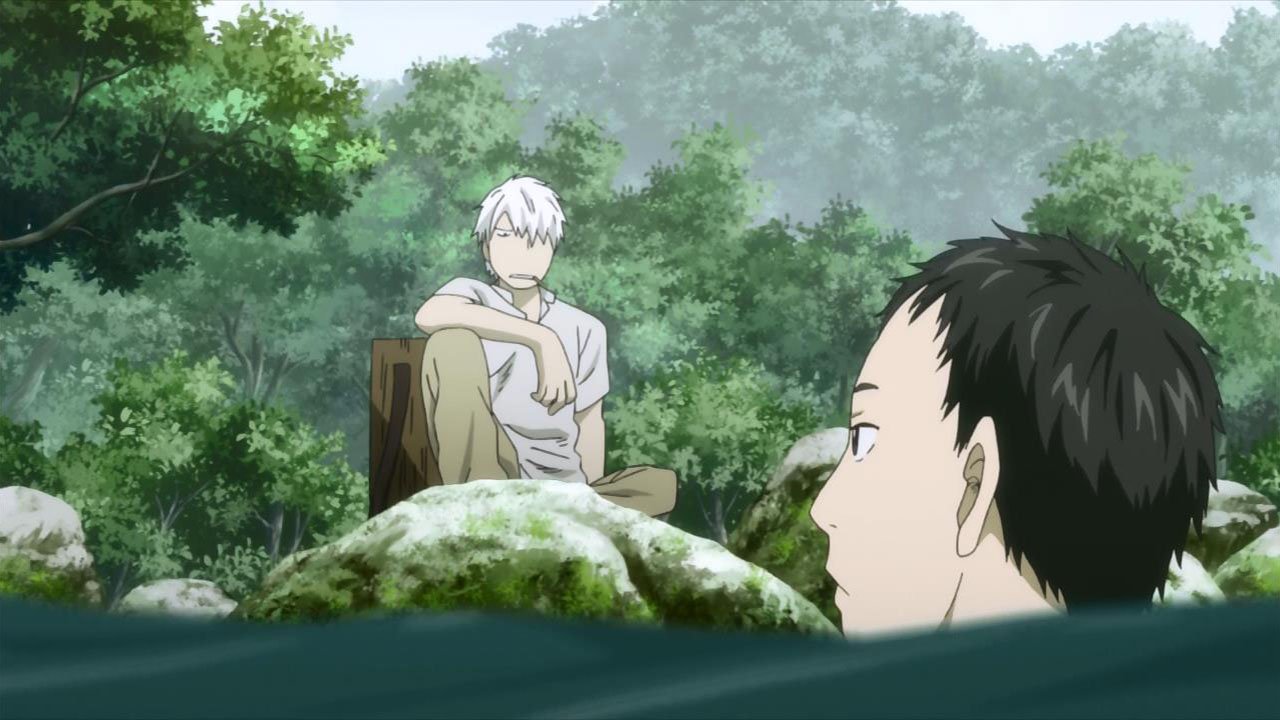
Mushi-Shi defies easy categorization, blending elements of slice-of-life, supernatural, drama, and even horror. The series centers on Ginko, a Mushishi journeying across Japan to study Mushi, ethereal beings intertwined with nature. While Ginko occasionally intervenes, his role primarily involves observing the lives of others and the Mushi that coexist with them.
Immersing viewers in a mesmerizing world, Mushi-Shi explores themes of wonder, beauty, and melancholy. While the pace may be slow at times, the anime’s exceptional writing ensures a fascinating experience throughout.
“Mushi-Shi” is a mesmerizing and contemplative anime series based on the manga of the same name by Yuki Urushibara. First serialized in 1999 and later adapted into an anime in 2005, “Mushi-Shi” is renowned for its ethereal atmosphere, stunning artwork, and thought-provoking narratives.
Set in a fantastical version of feudal Japan, the series follows the journey of Ginko, a Mushi Master who travels the countryside, encountering supernatural beings known as Mushi and helping those affected by their mysterious powers.
In “Mushi-Shi,” Mushi are primitive life forms that exist beyond ordinary life. Neither plants nor animals, Mushi are entities that inhabit the natural world, often causing strange and unexplained phenomena that affect the lives of humans. As a Mushi Master, Ginko possesses a deep understanding of Mushi and their interactions with the world, allowing him to mediate between humans and the supernatural.
The structure of “Mushi-Shi” is largely episodic, with each episode presenting a self-contained story centered around Ginko’s encounters with different Mushi and the people affected by them. From villages plagued by mysterious illnesses to forests haunted by spectral apparitions, each episode offers a unique and nice exploration of the supernatural.
While the series primarily focuses on stand-alone episodes, there are moments throughout the series that go into Ginko’s past and his personal journey as a Mushi Master. Through flashbacks and character interactions, viewers learn about Ginko’s tragic history and the events that shaped him into the enigmatic and compassionate figure he is today.
At its core, “Mushi-Shi” is a meditation on the relationship between humanity and the natural world. Through Ginko’s encounters with Mushi and the people he meets along his journey, the series explores themes of balance, harmony, and the interconnectedness of all living things.
“Mushi-Shi” is renowned for its philosophical depth and existential themes, inviting viewers to contemplate the mysteries of life, death, and the nature of existence. Through its meditative storytelling and atmospheric visuals, the series offers a profound and introspective exploration of the human condition.
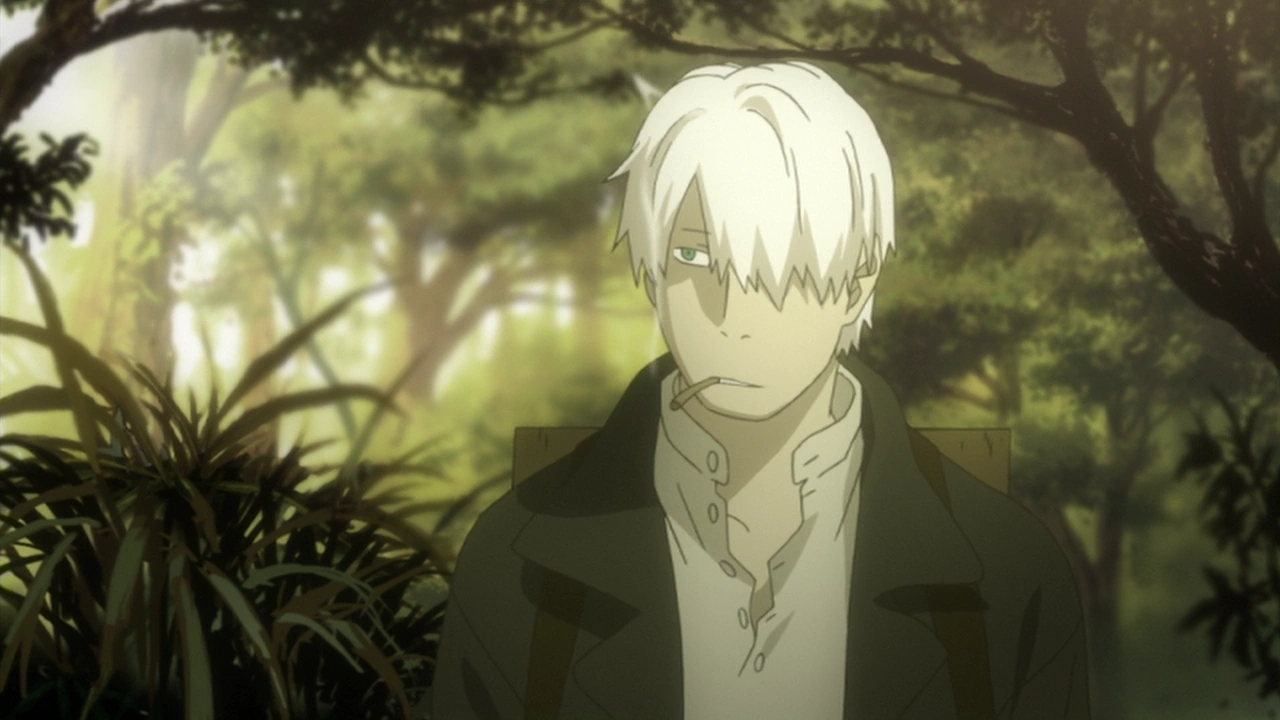
One of the defining features of “Mushi-Shi” is its ethereal atmosphere, which is achieved through its hauntingly beautiful artwork, evocative sound design, and meditative pacing. Each episode unfolds like a dream, drawing viewers into a world of wonder and mystery that feels both familiar and otherworldly.
While “Mushi-Shi” is primarily episodic in nature, it is ultimately a character-driven series, with each episode focusing on the experiences and emotions of the people affected by Mushi. Through its richly developed characters and emotionally resonant storytelling, the series offers a profound exploration of the human condition and the myriad ways in which we grapple with the mysteries of life.
“Mushi-Shi” is renowned for its breathtaking artwork, which is characterized by its lush surfaces, intricate character designs, and evocative use of color and light. The series’ visuals are complemented by a hauntingly beautiful musical score, composed by Toshio Masuda, which enhances the atmosphere and mood of each episode.
“Mushi-Shi” has received widespread critical acclaim for its innovative storytelling, stunning artwork, and profound themes. The series has won numerous awards, including the Tokyo Anime Award for Best Television Series in 2006, and has earned a dedicated fanbase around the world. Its influence can be seen in the work of countless creators and has inspired a resurgence of interest in atmospheric and contemplative anime.
Mushi-Shi” stands as a masterful work of art that transcends the boundaries of the anime medium. With its ethereal atmosphere, thought-provoking narratives, and stunning visuals, the series offers a nice and immersive journey into a world of wonder and mystery.
Whether you’re a fan of supernatural dramas or simply appreciate thought-provoking storytelling, “Mushi-Shi” is a must-watch series that will leave a lasting impression on anyone who ventures into its enchanting world.
4. Kingdom
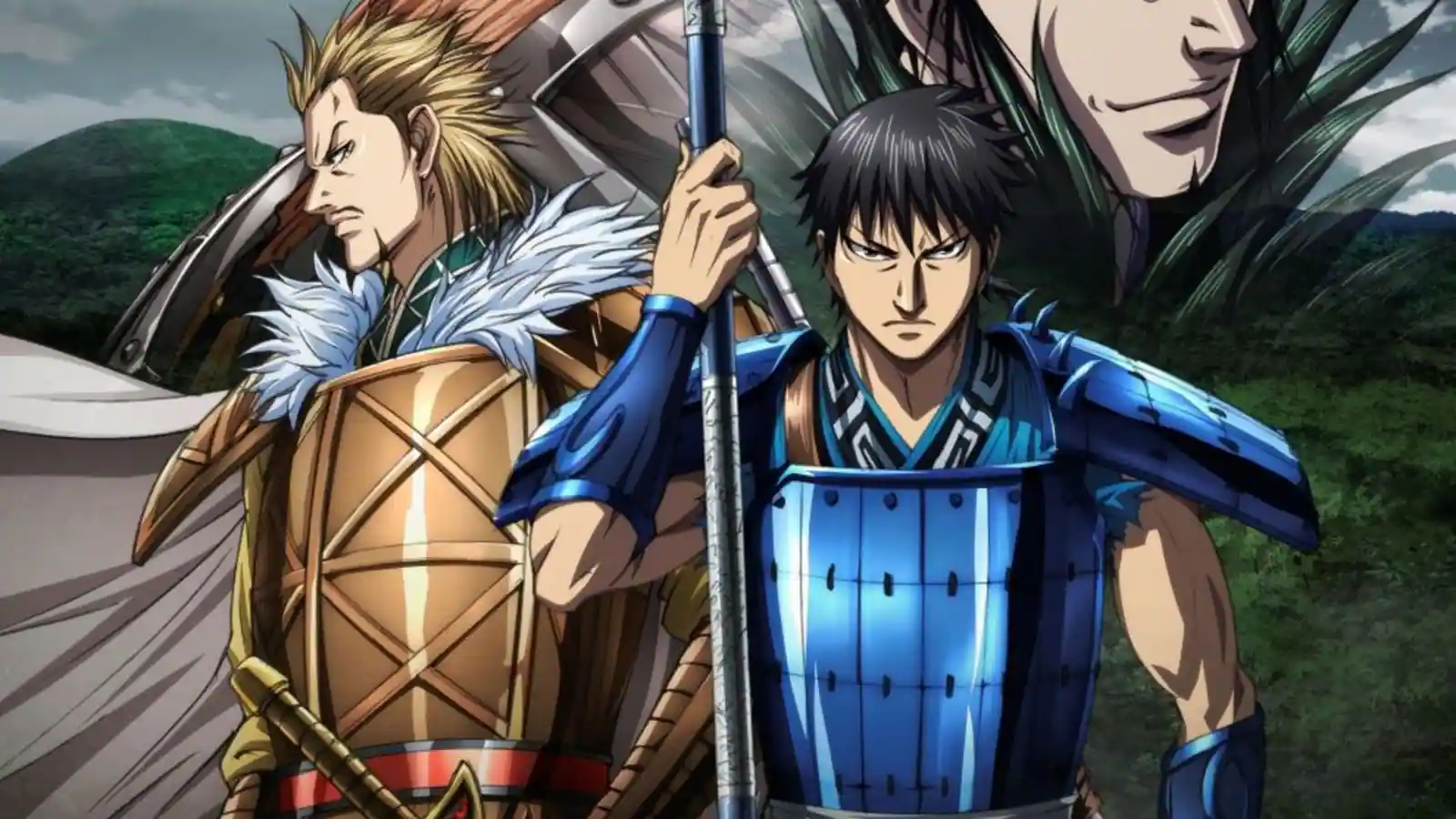
Adapted from Yasuhisa Hara’s acclaimed manga, Kingdom looks on an ambitious journey through China’s tumultuous Warring States Period. Following two orphans, Xin and Piao, as they aspire to become generals, the narrative later hones in on Xin’s rise to prominence as one of King Zheng of Qin’s most steadfast soldiers.
Kingdom’s animation may initially present a challenge for some viewers, blending 3D CGI with 2D backgrounds. The first season, in particular, has drawn mixed reactions due to its divisive visual style. However, subsequent seasons show marked improvements in animation quality. Despite this initial hurdle, Kingdom’s compelling story and well-developed characters shine through from the outset, and they only grow stronger as the series progresses.
By the time season 3 unfolds, Kingdom transforms into a sweeping war epic, characterized by its ambitious storytelling and richly nuanced characters. The anime masterfully navigates an expansive roster of personalities, delivering a fascinating narrative experience.
“Kingdom” is a riveting South Korean television series that seamlessly blends historical drama with elements of horror and political intrigue. Created by Kim Eun-hee and directed by Kim Seong-hun, this Netflix original series first premiered in 2019 and has since garnered widespread acclaim for its gripping storytelling, rich character development, and stunning visuals.
Set in Korea’s Joseon period during the 15th century, “Kingdom” transports viewers to a world fraught with political turmoil and social unrest. At its core, the series follows the journey of Crown Prince Lee Chang, played masterfully by Ju Ji-hoon, as he navigates the treacherous waters of court politics while confronting a mysterious plague that turns people into flesh-eating zombies.
What sets “Kingdom” apart from other period dramas is its innovative fusion of historical fiction and the zombie genre. The show seamlessly integrates traditional Korean customs, costumes, and architecture with the visceral horror of the undead, creating a unique and immersive viewing experience. The attention to detail in the production design is impeccable, transporting audiences back in time to a meticulously recreated Joseon-era Korea.
One of the show’s greatest strengths lies in its character development. Crown Prince Lee Chang is a compelling protagonist whose journey from a reluctant heir to a decisive leader is both inspiring and poignant. Ju Ji-hoon delivers a nuanced performance, capturing the complexity of his character’s internal struggles as he grapples with his duty to his kingdom and his desire to uncover the truth behind the epidemic.
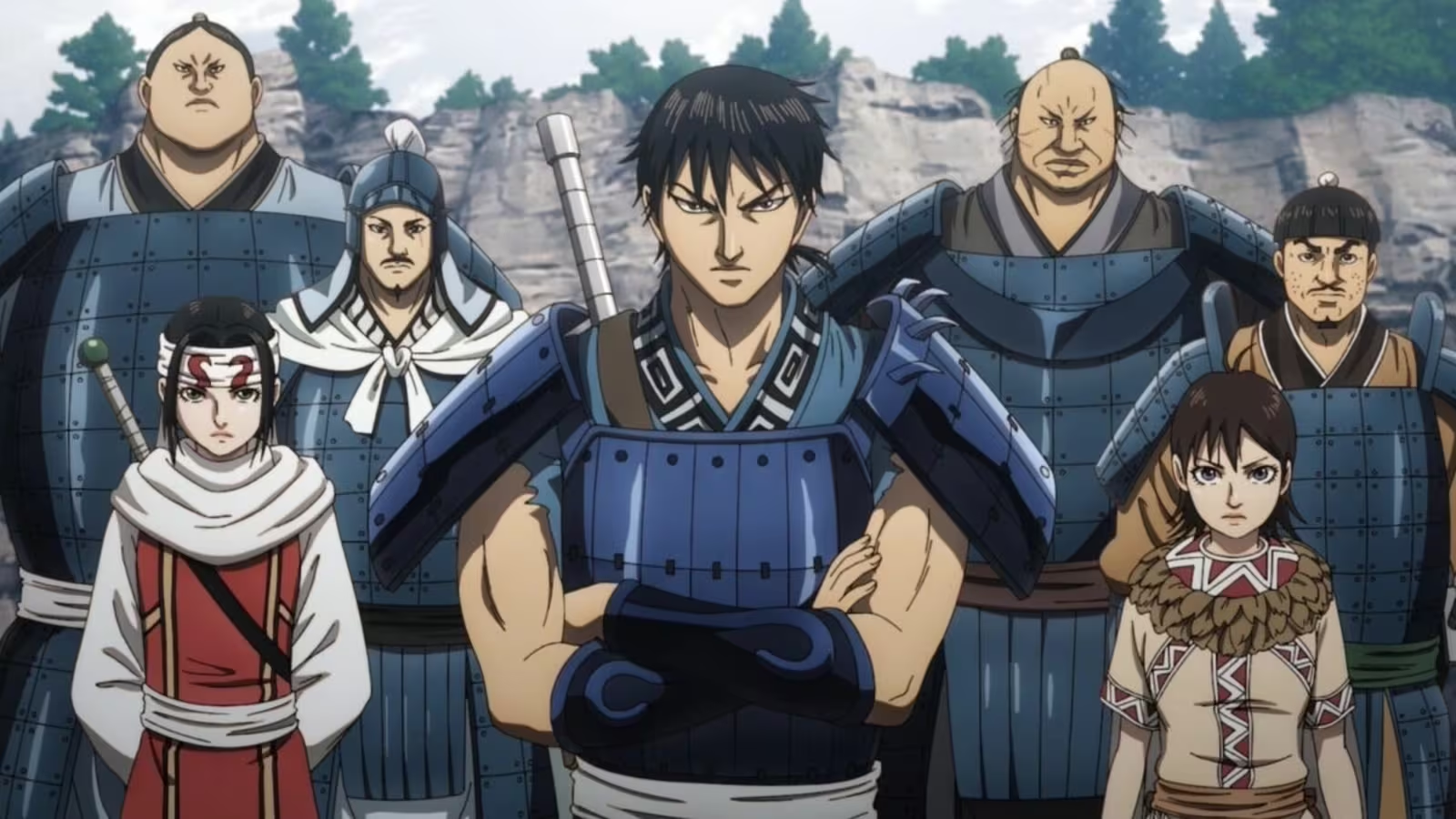
Supporting characters are equally well-developed, each with their own motivations and conflicts. Bae Doona shines as Seo-bi, a brilliant physician determined to find a cure for the plague, while Ryu Seung-ryong delivers a chilling portrayal of the power-hungry Minister Cho Hak-ju. The ensemble cast is rounded out by talented actors who bring depth and authenticity to their respective roles, further enhancing the series’ immersive world-building.
Beyond its thrilling plot and well-drawn characters, “Kingdom” also explores deeper themes such as power, corruption, and the resilience of the human spirit. The political machinations of the court serve as a backdrop to the larger narrative, highlighting the lengths to which individuals will go to attain and maintain power. At its heart, however, the series is a testament to the strength of ordinary people facing extraordinary circumstances, finding hope and redemption amidst the chaos.
Visually, “Kingdom” is a feast for the eyes. From sweeping vistas of the Korean countryside to claustrophobic interiors shrouded in darkness, each frame is meticulously crafted to evoke a sense of atmosphere and tension. The use of lighting and cinematography enhances the show’s horror elements, creating moments of genuine terror that will leave viewers on the edge of their seats.
In addition to its stellar production values, “Kingdom” also boasts a tightly paced narrative that keeps audiences engaged from start to finish. The series expertly balances moments of intense action with quieter, character-driven scenes, allowing for both thrilling set pieces and emotional resonance. Each episode builds upon the last, ratcheting up the tension as the mystery of the plague deepens and the stakes continue to rise.
As with any great television series, “Kingdom” is not without its flaws. Some viewers may find the pacing occasionally uneven, particularly in the second season, which introduces new characters and plotlines that take time to fully develop. Additionally, while the show’s blend of historical drama and horror is undeniably unique, it may not be to everyone’s taste.
Kingdom” is a triumph of storytelling and craftsmanship that deserves its place among the pantheon of great television dramas. With its plot, well-drawn characters, and stunning visuals, the series offers a thrilling and immersive viewing experience that will leave audiences eagerly awaiting each new installment. Whether you’re a fan of historical epics, zombie thrillers, or simply great television, “Kingdom” is not to be missed.
3. Kaguya-sama: Love Is War
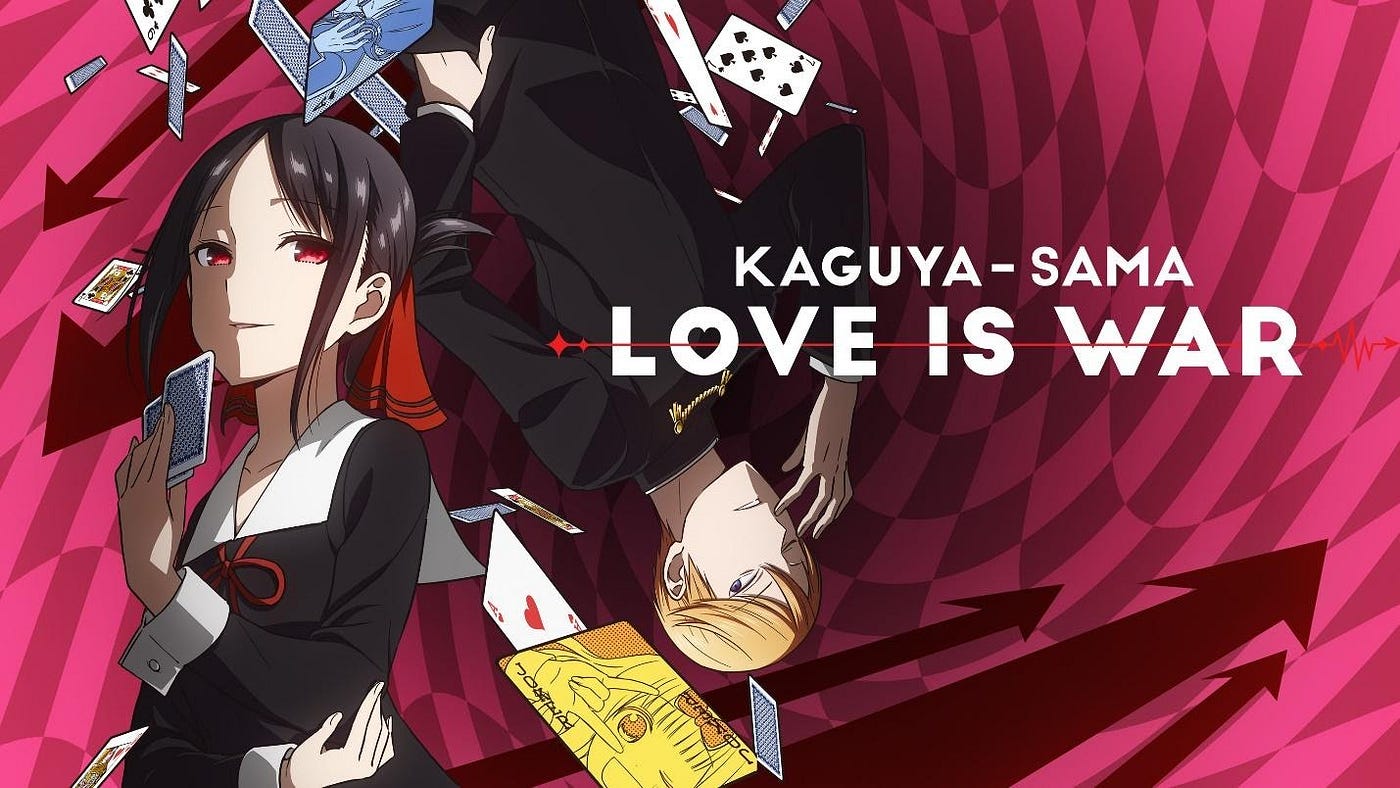
Kaguya-sama: Love Is War may seem worlds apart from Berserk, but it’s a shining example of a competent seinen series nonetheless. Set in Shuchiin Academy, the story revolves around student council president Miyuki Shirogane and vice president Kaguya Shinomiya, who engage in a battle of wits and psychological warfare to outmaneuver each other into confessing their feelings.
This romantic comedy offers a refreshing blend of humor and mature themes, making it a standout choice for anime fans seeking both entertainment and depth. Kaguya-sama: Love Is War excels in delivering clever comedy while also exploring the complexities of relationships, making it a must-watch for seinen enthusiasts.
“Kaguya-sama: Love Is War” is a delightful romantic comedy anime series based on the manga of the same name by Aka Akasaka. Directed by Mamoru Hatakeyama and produced by A-1 Pictures, this anime first aired in 2019 and quickly gained a devoted fanbase for its witty humor, charming characters, and clever premise.
At its core, “Kaguya-sama: Love Is War” revolves around the high-stakes battle of wits between the two main characters, Kaguya Shinomiya and Miyuki Shirogane, both of whom are top students and members of the prestigious Shuchiin Academy’s student council.
Despite harboring romantic feelings for each other, Kaguya and Miyuki are too proud and stubborn to confess their love outright, leading to a series of hilarious schemes and mind games as they try to outmaneuver each other into confessing first.
What sets “Kaguya-sama: Love Is War” apart from other romantic comedies is its unique premise and execution. Rather than focusing solely on the ups and downs of teenage romance, the series approaches the genre with a playful and satirical twist, framing Kaguya and Miyuki’s relationship as a strategic battle for dominance.
Each episode is structured around a different “battle” in which the characters employ elaborate schemes and psychological tactics to gain the upper hand, resulting in a series of comedic misunderstandings and mishaps.
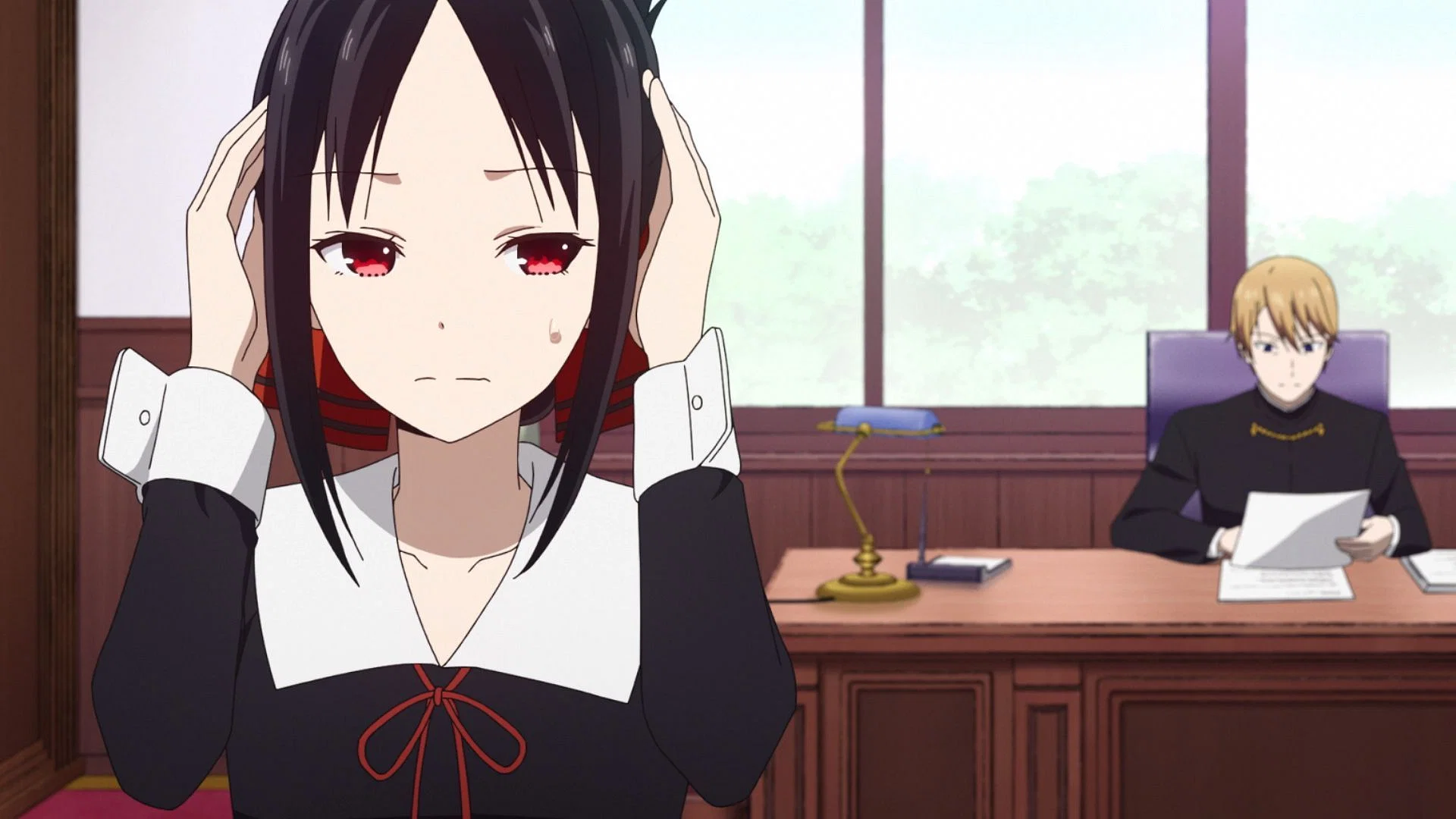
The strength of “Kaguya-sama: Love Is War” lies in its well-written characters and sharp, witty dialogue. Kaguya Shinomiya, the proud and elegant daughter of a wealthy conglomerate, is a formidable opponent with a hidden vulnerable side, while Miyuki Shirogane;
the hardworking and ambitious student council president is equally determined to win the affection of his crush. Their interactions are filled with playful banter and hilarious misunderstandings, keeping viewers entertained and engaged throughout the series.
Supporting characters also add depth and humor to the show, from the mischievous Chika Fujiwara, whose cheerful demeanor belies a devious streak, to the stoic Yu Ishigami, whose deadpan reactions provide a counterbalance to the chaos of the student council room. Each character brings their own unique perspective to the romantic hijinks, resulting in a dynamic and entertaining ensemble cast.
Visually, “Kaguya-sama: Love Is War” is a treat to watch, with vibrant animation and expressive character designs that bring the story to life. The series makes creative use of visual metaphors and exaggerated facial expressions to convey the characters’ inner thoughts and emotions, adding an extra layer of humor to the proceedings.
In addition to its comedic elements, “Kaguya-sama: Love Is War” also explores deeper themes such as friendship, identity, and the nature of love. Despite the characters’ comical attempts to outsmart each other, the series ultimately celebrates the power of genuine connection and emotional vulnerability, reminding viewers that love is not just a game to be won, but a heartfelt expression of affection and understanding.
Kaguya-sama: Love Is War is a charming and entertaining anime series that offers a fresh take on the romantic comedy genre. With its clever premise, endearing characters, and sharp wit, the show is sure to delight fans of all ages and leave them eagerly anticipating each new episode. Whether you’re a longtime anime enthusiast or new to the medium, “Kaguya-sama: Love Is War” is an absolute must-watch.
2. Rainbow

Rainbow stands out as one of the best seinen anime, but it’s not an easy watch. Unlike fantasy-driven tragedies like Made in Abyss and Berserk, Rainbow’s darkness is rooted entirely in human cruelty.
Set in the 1950s, the anime unfolds in a reform school where a group of teenagers grapple with unimaginable horrors under the rule of a despicable and vile authority figure. As they endure a living nightmare, their only solace lies in the bond they share with each other. Rainbow’s portrayal of human suffering and resilience is undeniably powerful, making it a poignant and unforgettable viewing experience.
“Rainbow: Nisha Rokubou no Shichinin” is a profound and emotionally gripping anime series based on the manga by George Abe and Masasumi Kakizaki. Set in post-World War II Japan, “Rainbow” follows the harrowing journey of seven young men who forge a bond of friendship and resilience as they navigate the brutal realities of life in a juvenile reformatory.
With its raw portrayal of trauma, survival, and the enduring power of friendship, “Rainbow” has entertained audiences with its heartfelt storytelling, complex characters, and unflinching exploration of the human spirit.
“Rainbow” is set in 1955, in the aftermath of World War II, a time of social upheaval and economic hardship in Japan. The series follows the lives of seven teenagers who are sent to a harsh and oppressive juvenile reformatory after being convicted of various crimes. Forced to endure abuse, violence, and despair, the boys form a bond of brotherhood as they strive to survive and maintain their humanity in the face of overwhelming adversity.
The series begins with the boys’ arrival at the Shounan Special Reform School, where they are subjected to brutal treatment by sadistic guards and corrupt officials. Despite the harsh conditions, they find solace and strength in their friendship, forming a tight-knit group determined to overcome the challenges they face.
As the boys navigate the trials and tribulations of life in the reformatory, their bond of brotherhood deepens, providing them with the courage and resilience to endure even the darkest moments. Together, they support and protect each other, offering hope and solidarity in a world filled with cruelty and despair.
Throughout the series, the boys cling to the hope of one day escaping from the reformatory and building a better life for themselves. Their journey is fraught with danger and uncertainty, as they confront powerful adversaries and face impossible odds in their quest for freedom and redemption.
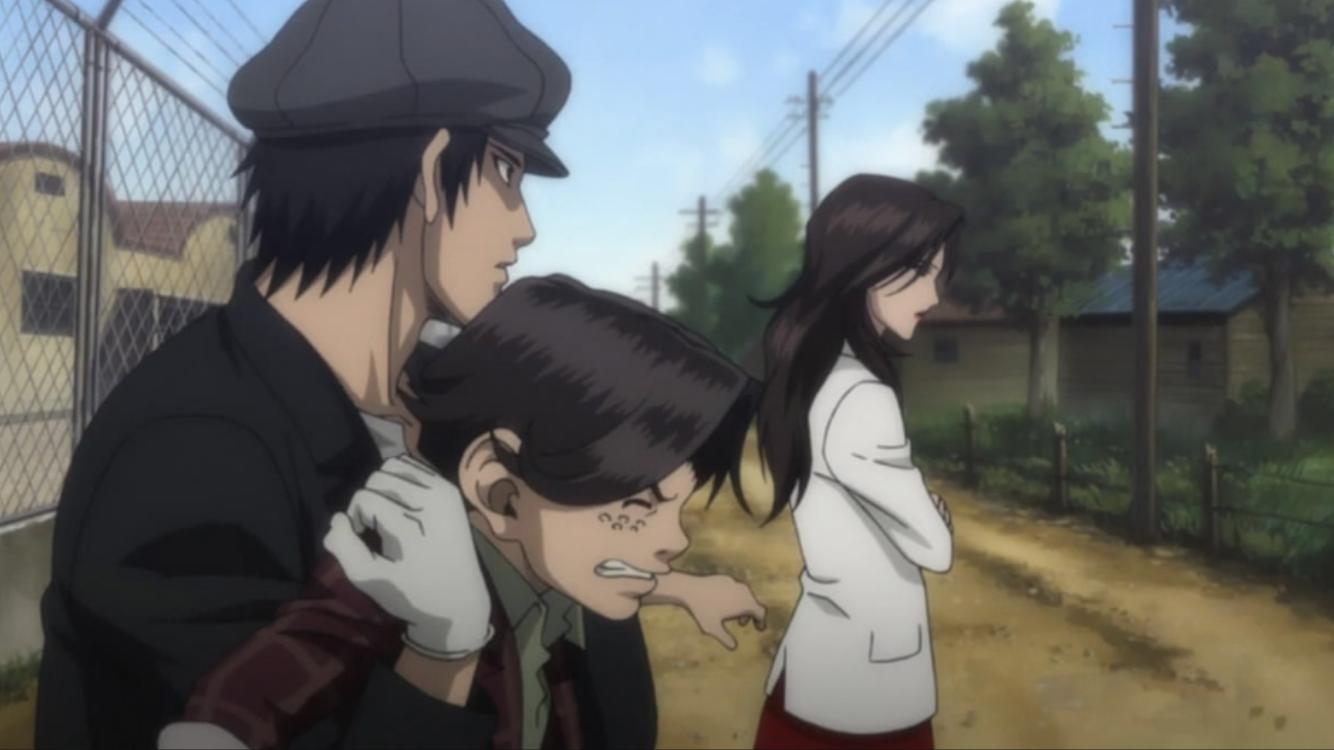
At its core, “Rainbow” is a story about resilience and survival, as the characters confront unimaginable hardships and strive to overcome the obstacles in their path. Through their struggles and triumphs, the series explores the indomitable nature of the human spirit and the power of hope to light the darkest of paths.
The heart of “Rainbow” lies in the bond of friendship that develops among the boys as they face adversity together. Their unwavering loyalty and support for each other serve as a source of strength and inspiration, demonstrating the transformative power of camaraderie in the face of adversity.
“Rainbow” goes deep into themes of redemption and forgiveness, as the characters grapple with their past mistakes and strive to atone for their sins. Through acts of compassion and selflessness, they seek to break free from the cycle of violence and find redemption in the eyes of others and themselves.
“Rainbow” is characterized by its gritty and realistic art style, which captures the harshness and brutality of life in the reformatory with unflinching detail. The character designs are expressive and emotive, conveying the characters’ pain, fear, and determination with remarkable clarity. The series’ animation is fluid and dynamic, heightening the intensity of the action scenes and emotional moments.
“Rainbow” has received widespread critical acclaim for its powerful storytelling, compelling characters, and emotional depth. The series has won numerous awards and has earned a dedicated fanbase around the world. Its impact can be seen in the way it has sparked conversations about social justice, mental health, and the importance of empathy and compassion in the face of adversity.
Rainbow: Nisha Rokubou no Shichinin” is a masterful work of storytelling that transcends the boundaries of the anime medium. With its powerful themes, complex characters, and raw emotional intensity, the series offers a profound exploration of the human condition and the enduring power of friendship in the face of adversity.
Whether you’re a fan of drama, and action, or simply appreciate thought-provoking storytelling, “Rainbow” is a must-watch series that will leave a lasting impression on anyone who ventures into its hauntingly beautiful world.
1. Monster
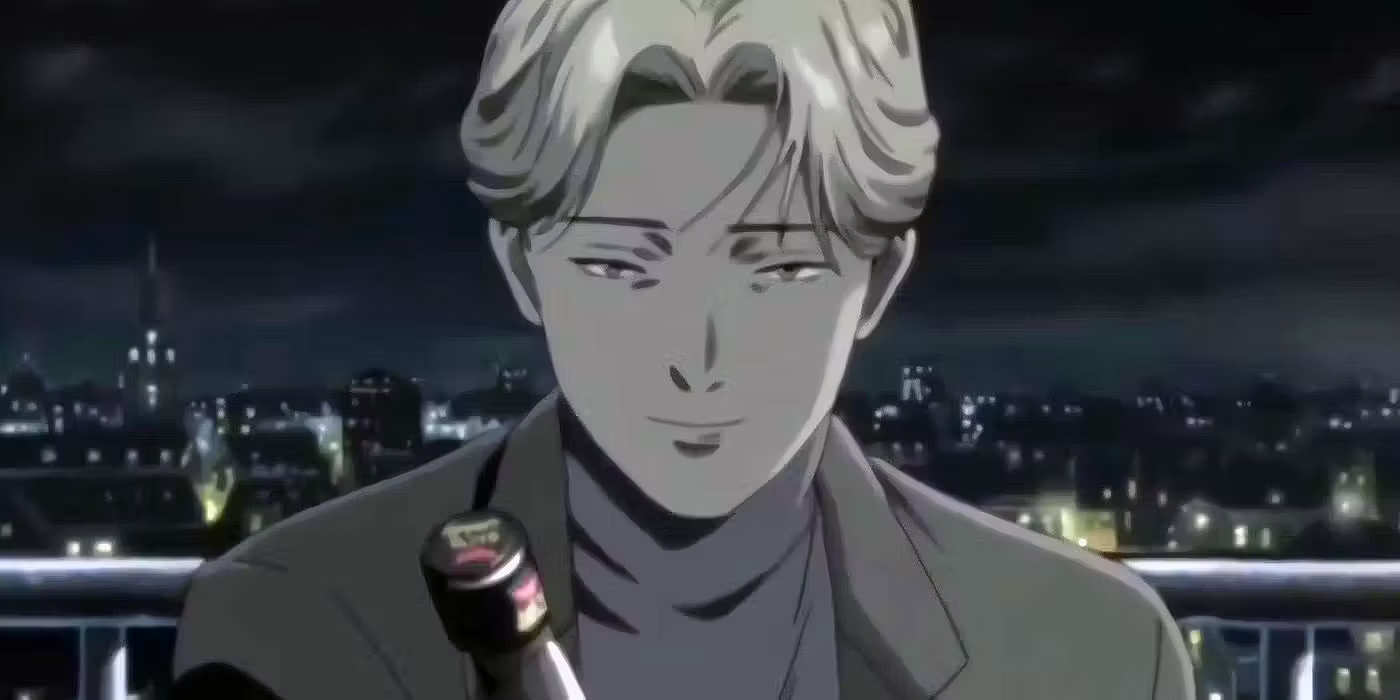
Naoki Urasawa’s manga creations are indeed legendary, and while many of his works have yet to be adapted into anime, Monster stands as a rare exception. This psychological thriller is unparalleled in the seinen anime.
The story centers on Kenzo Tenma, an idealistic surgeon in Germany who makes a fateful decision to save a child instead of a prominent political figure, jeopardizing his career in the process. This act not only alters Tenma’s life trajectory but also forms an indelible connection with Johan, the boy he rescued. However, Johan’s influence proves to be anything but positive.
Grim, mature, and intellectually stimulating, Monster fascinates viewers with its intricate and ambitious narrative spanning over 70 episodes. Seamlessly weaving together complex themes and character dynamics, the anime stands as a pinnacle of excellence in seinen storytelling.
“Monster” is a psychological thriller anime adapted from the manga of the same name written and illustrated by Naoki Urasawa. First serialized in 1994, “Monster” has garnered widespread acclaim for its intricate plot, morally complex characters, and gripping suspense.
Set in Germany and spanning various European locations, the series follows the journey of Dr. Kenzo Tenma, a talented neurosurgeon who becomes entangled in a web of conspiracy and moral ambiguity after saving the life of a young boy who later grows up to become a ruthless serial killer.
The story of “Monster” begins in Dusseldorf, Germany, in 1986, where Dr. Kenzo Tenma, a skilled neurosurgeon working at Eisler Memorial Hospital, faces a moral dilemma when he must choose between saving the life of a young boy named Johan Liebert or the mayor of the town.
Tenma decides to operate on Johan, defying hospital protocol and saving the boy’s life. However, years later, Tenma realizes that Johan has grown up to become a remorseless serial killer responsible for a series of murders.
As Tenma goes deeper into Johan’s past and the sinister forces behind his actions, he becomes embroiled in a conspiracy that threatens to engulf him and everyone he cares about. The series explores themes of morality, identity, and the nature of evil as Tenma grapples with the consequences of his actions and strives to uncover the truth behind Johan’s enigmatic persona.
The series begins with Tenma’s fateful decision to save Johan’s life, setting off a chain of events that will have far-reaching consequences for everyone involved.
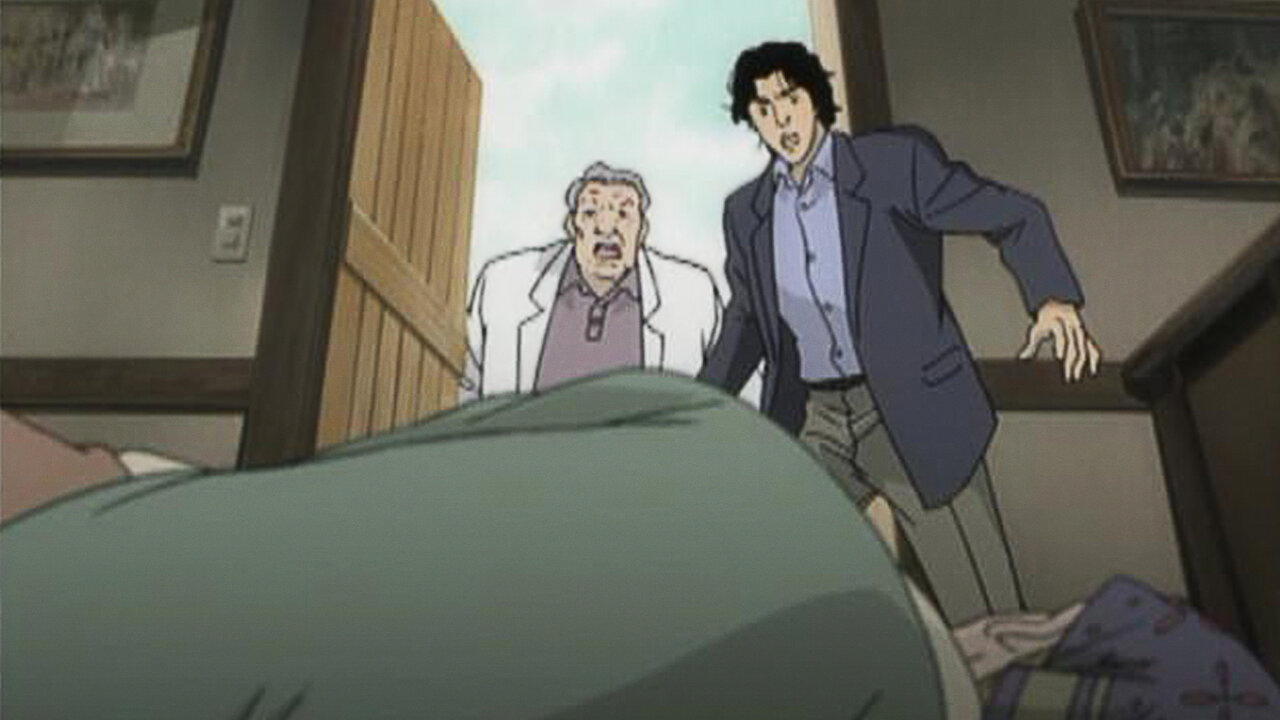
As Tenma investigates Johan’s past and the mystery surrounding his identity, he encounters a diverse cast of characters, including Inspector Heinrich Lunge, a brilliant detective determined to capture Johan at any cost, and Nina Fortner, Johan’s twin sister who is searching for answers about her own past.
As Tenma goes deeper into Johan’s past and the shadowy organization known as “The Monster,” he uncovers a web of conspiracy and corruption that reaches the highest levels of society. Along the way, he must confront his own moral ambiguity and the dark side of human nature as he grapples with the question of whether he can truly redeem himself for his past actions.
The series builds towards a climactic showdown between Tenma and Johan as the truth behind Johan’s origins and the sinister forces manipulating him are finally revealed. In a gripping and suspenseful finale, Tenma must confront the demons of his past and make a fateful decision that will determine the fate of everyone involved.
“Monster” explores the complexities of morality and the consequences of one’s actions. Through Tenma’s journey, the series raises questions about the nature of good and evil, and the lengths to which individuals will go to justify their actions in pursuit of their ideals.
The series goes into themes of identity and redemption as characters grapple with their pasts and struggle to find meaning and purpose in a world consumed by darkness. Through their journeys of self-discovery, they confront the demons of their pasts and strive to find redemption in the face of overwhelming adversity.
“Monster” is renowned for its gripping suspense and intricate plot twists that keep viewers on the edge of their seats from beginning to end. The series masterfully builds tension and anticipation as it reveals the mystery surrounding Johan’s enigmatic persona and the sinister forces manipulating him.
“Monster” is characterized by its dark and atmospheric art style, which complements the series’ suspenseful tone and psychological depth. The character designs are distinctive and memorable, with each character possessing their own unique appearance and personality traits. The series’ animation is fluid and dynamic, heightening the intensity of the suspenseful moments and emotional revelations.
“Monster” has received widespread critical acclaim for its compelling storytelling, complex characters, and thought-provoking themes. The series has won numerous awards and has earned a dedicated fanbase around the world. Its impact can be seen in the way it has influenced subsequent works in the psychological thriller genre and sparked discussions about morality, identity, and the nature of evil.
Monster” is a masterful work of psychological thriller anime that transcends the boundaries of the medium. With its intricate plot, morally complex characters, and gripping suspense, the series offers a thought-provoking exploration of the human condition and the dark depths of the human psyche.
Whether you’re a fan of mystery, suspense, or psychological drama, “Monster” is a must-watch series that will leave a lasting impression on anyone who ventures into its dark and twisted world.

